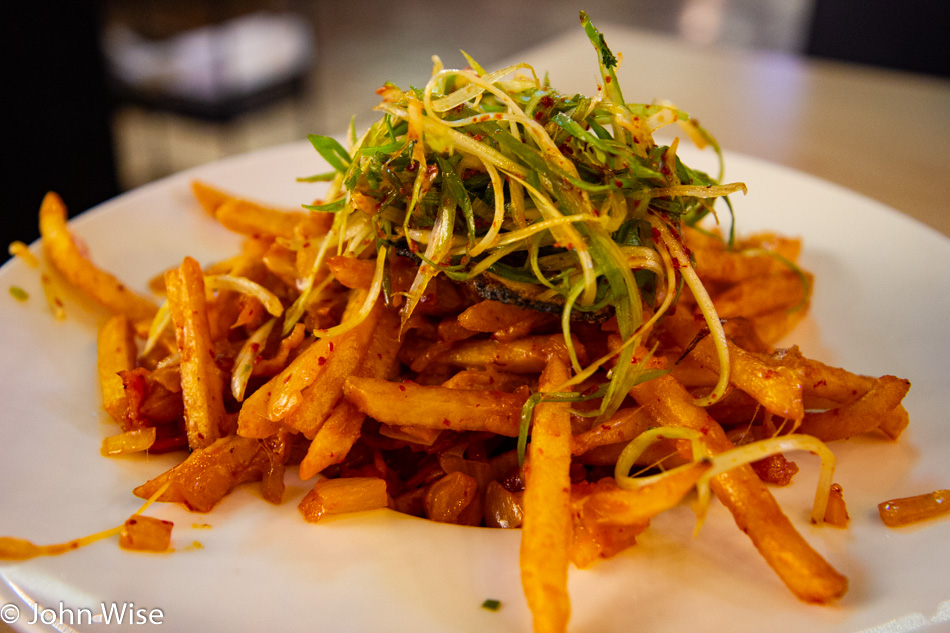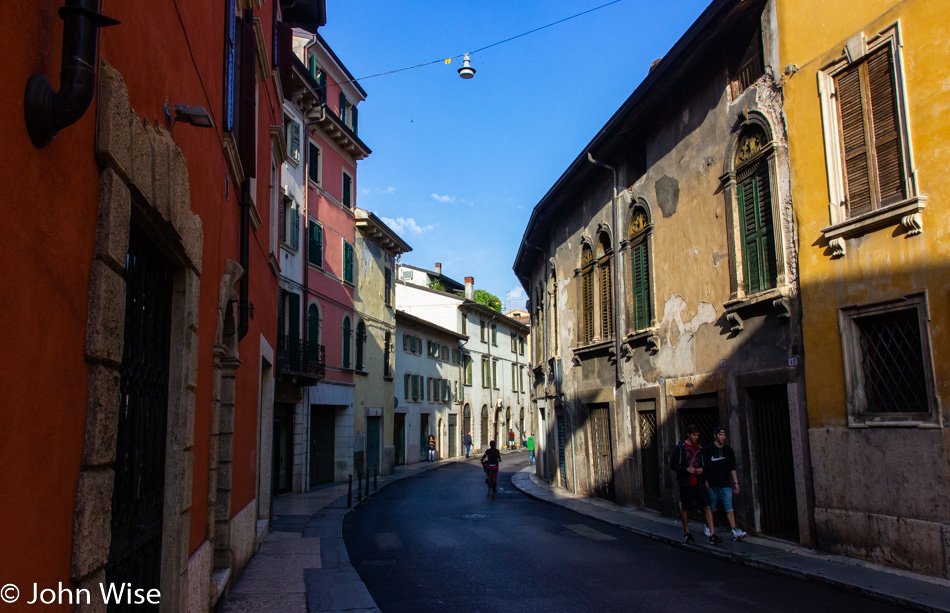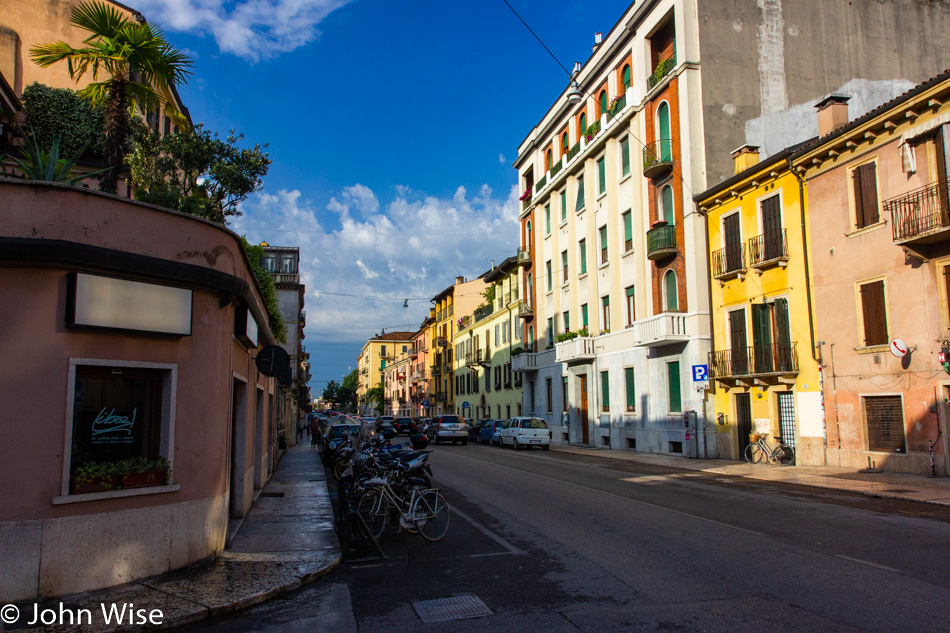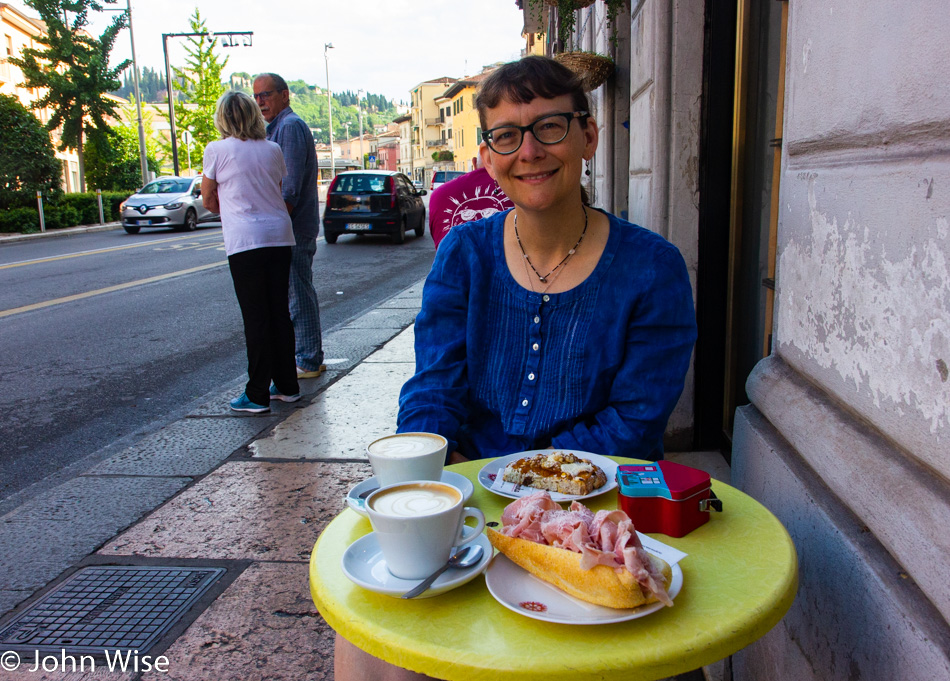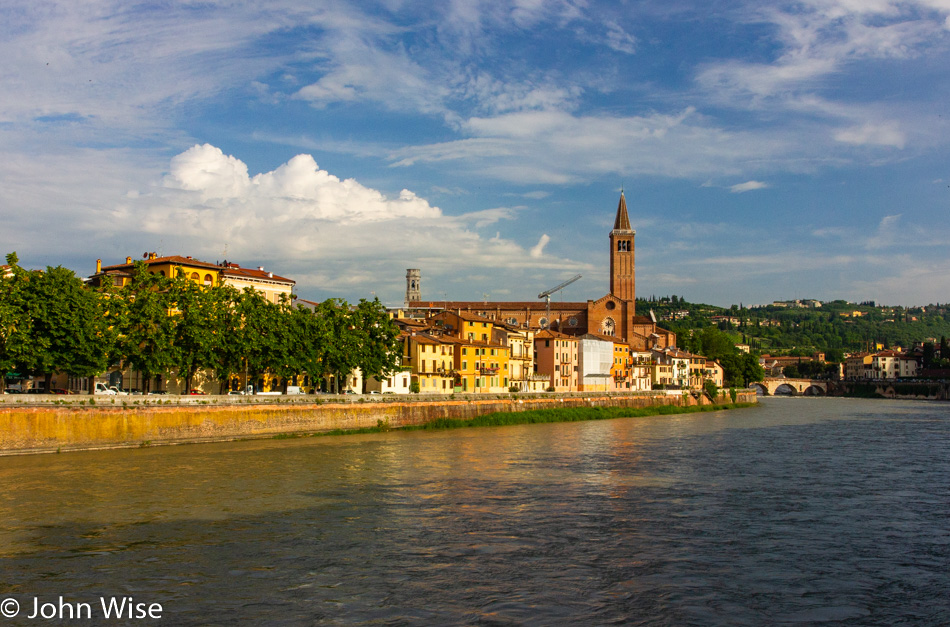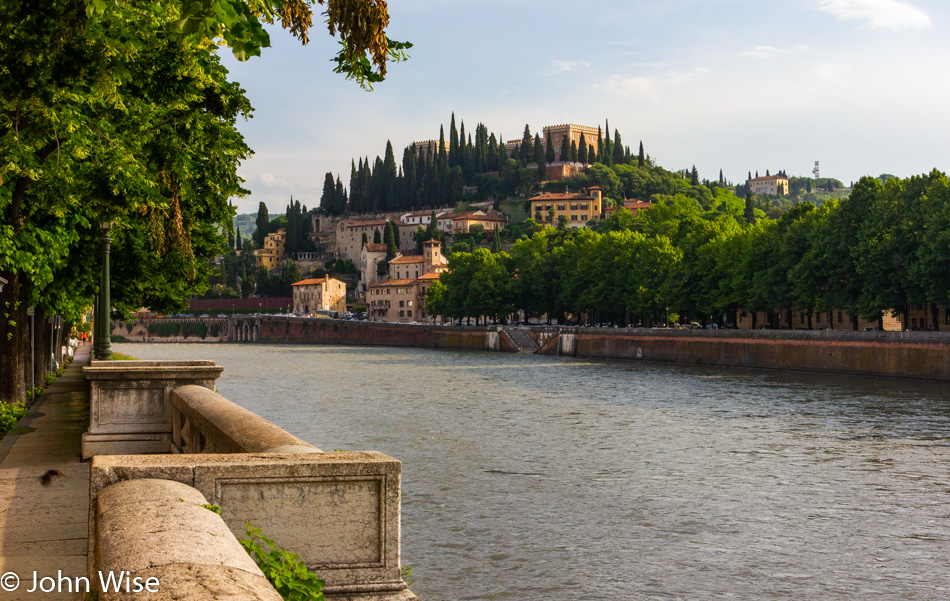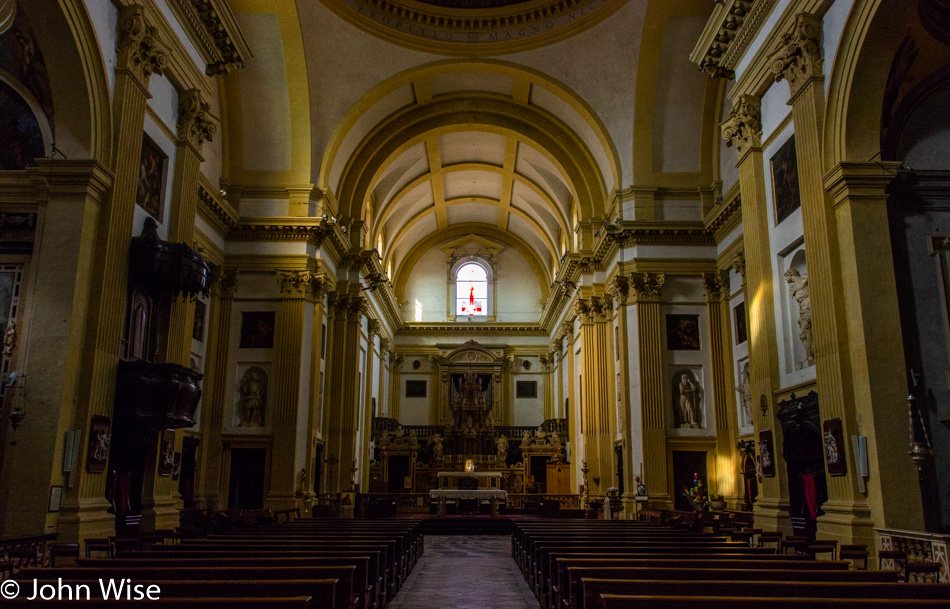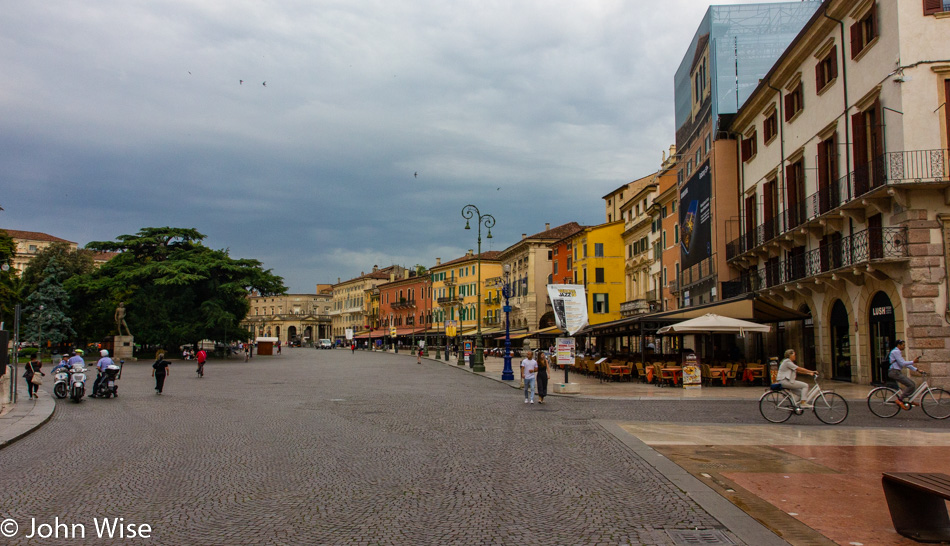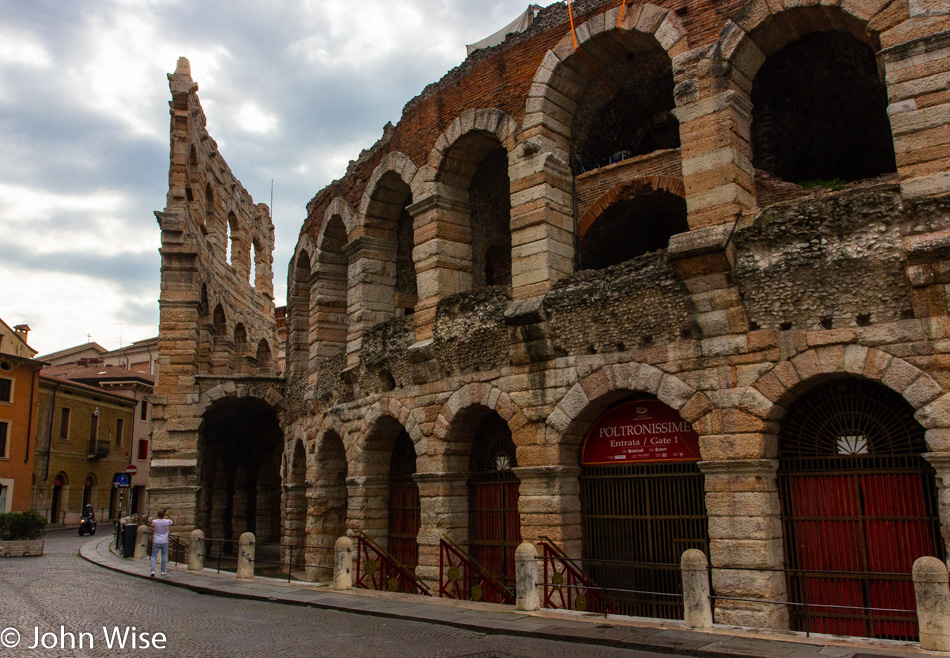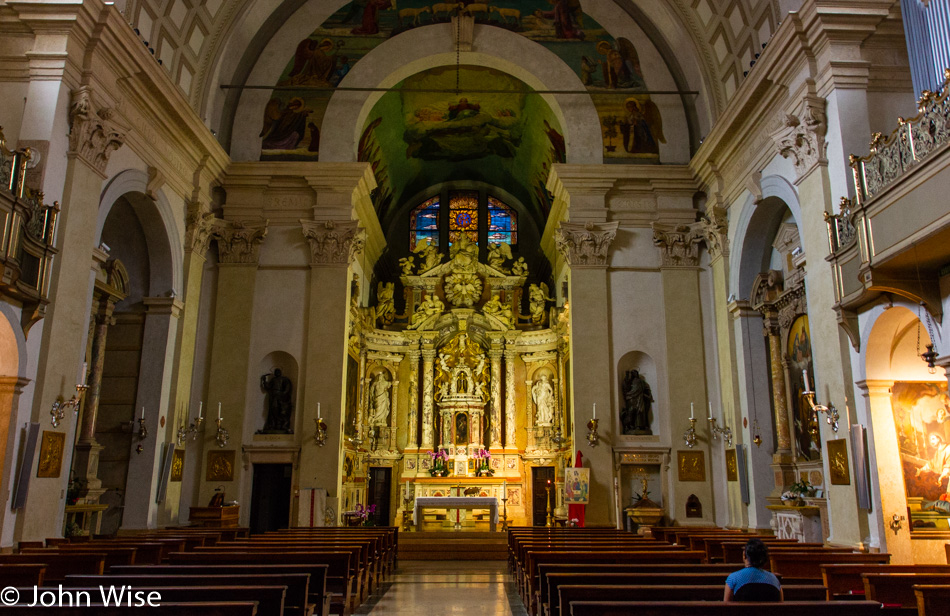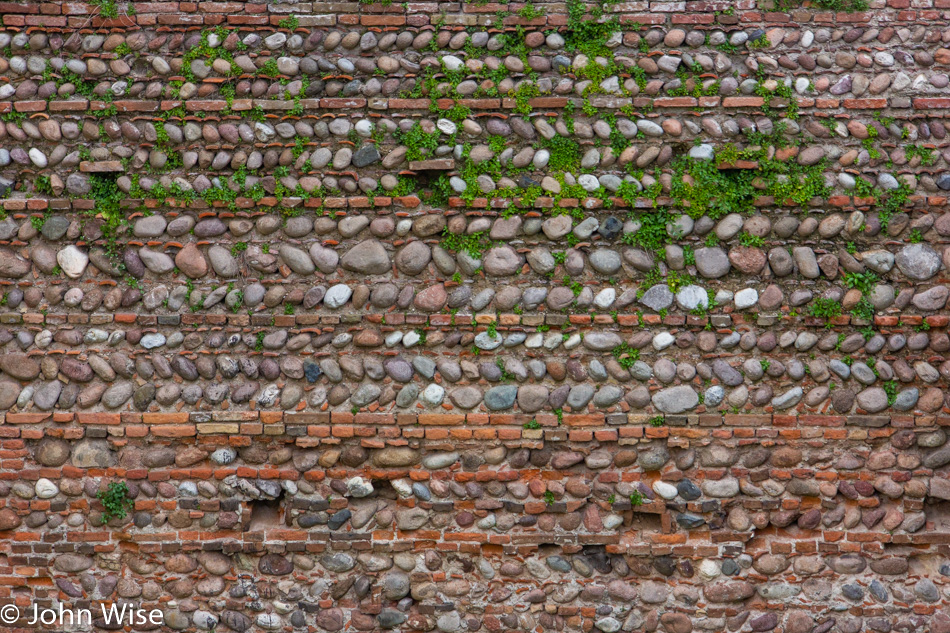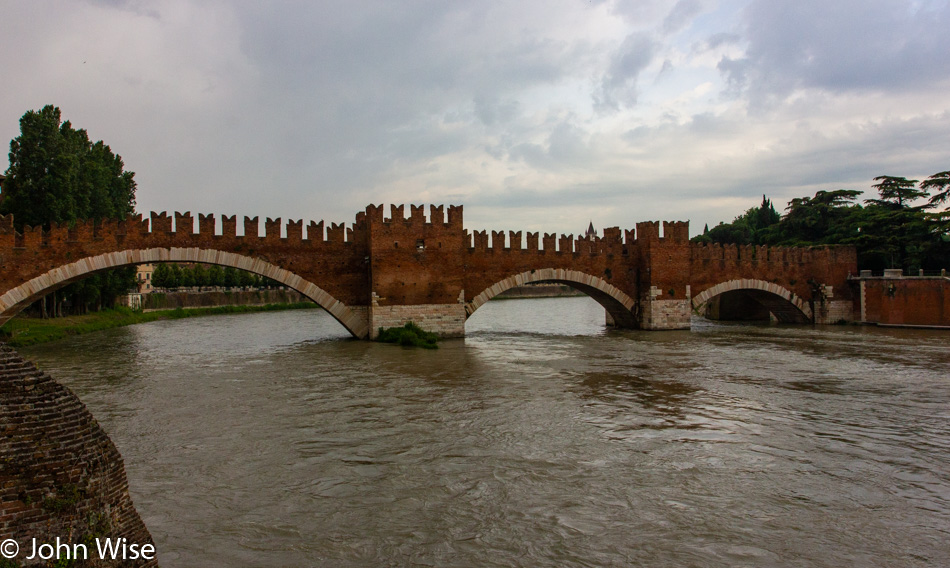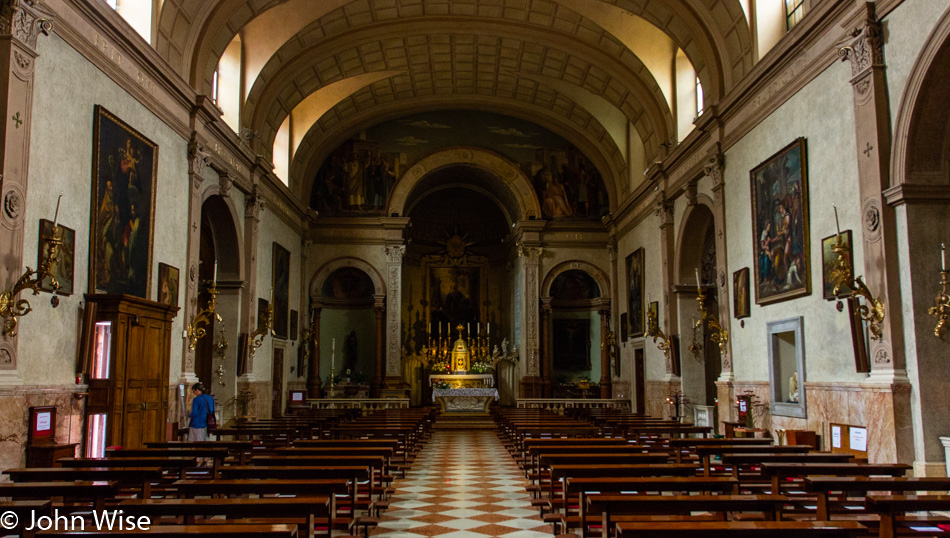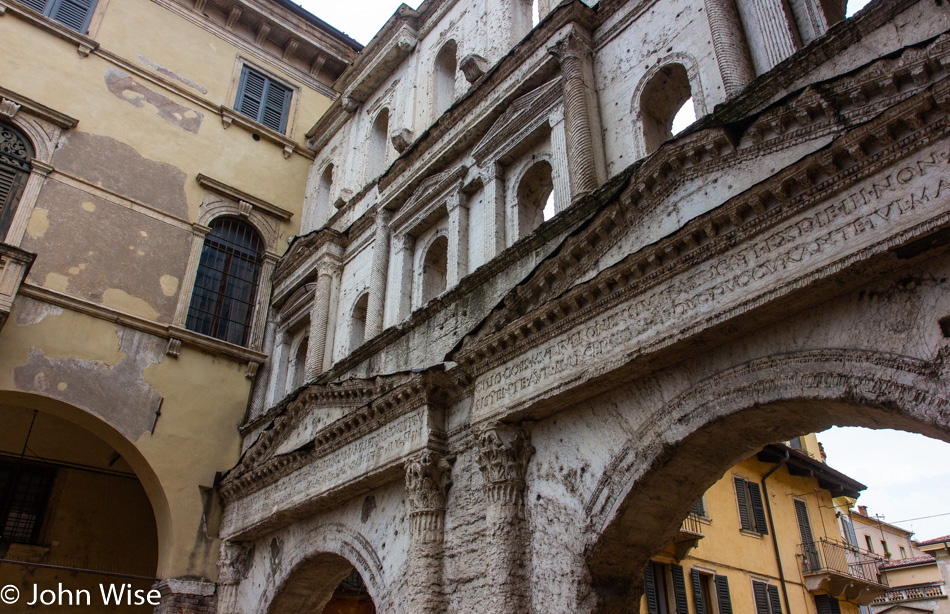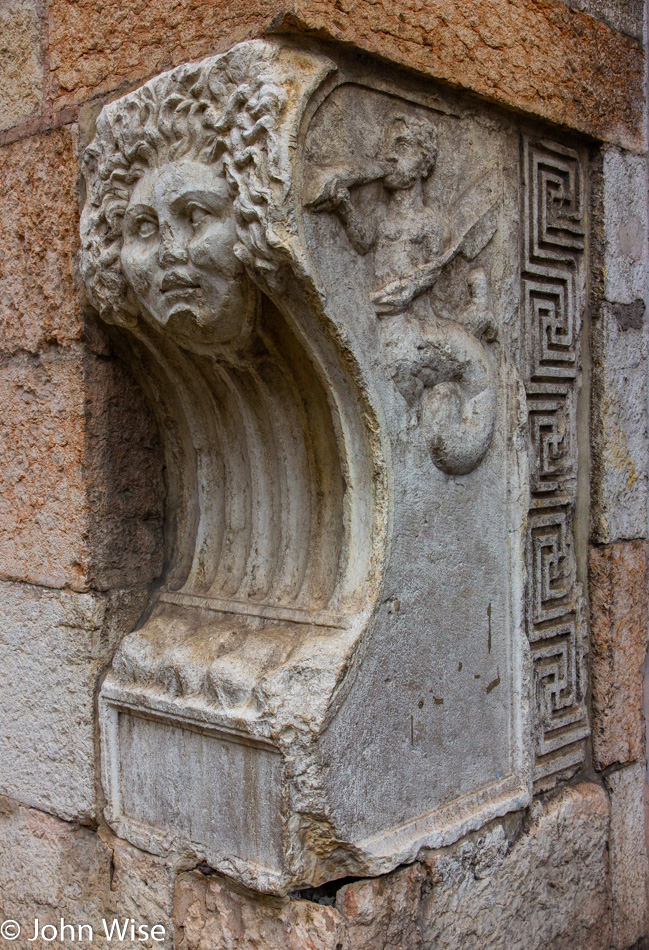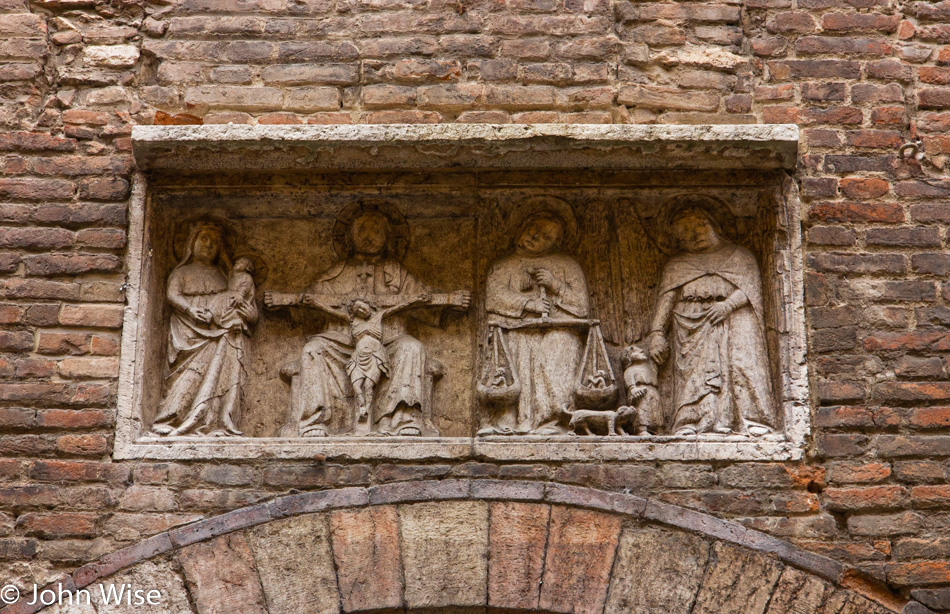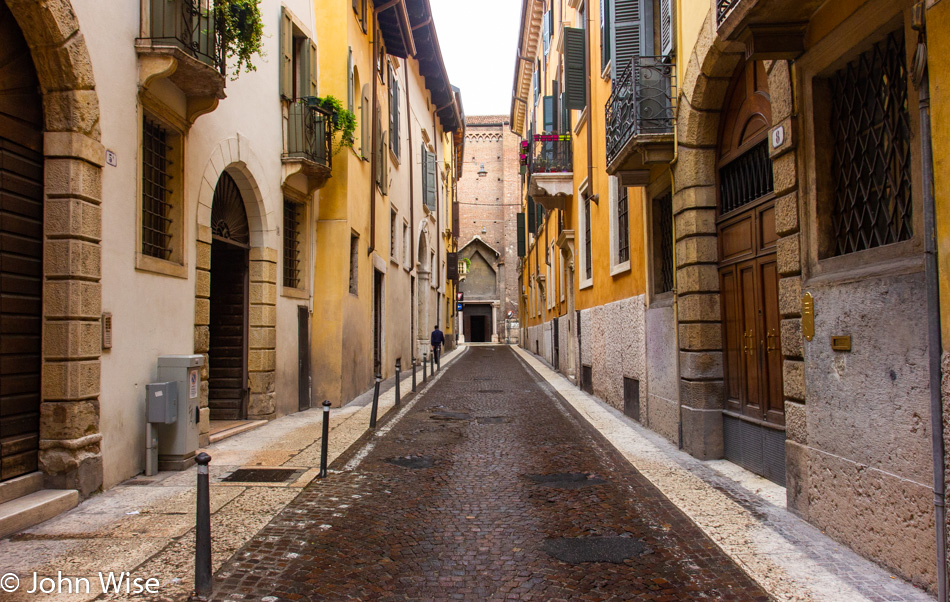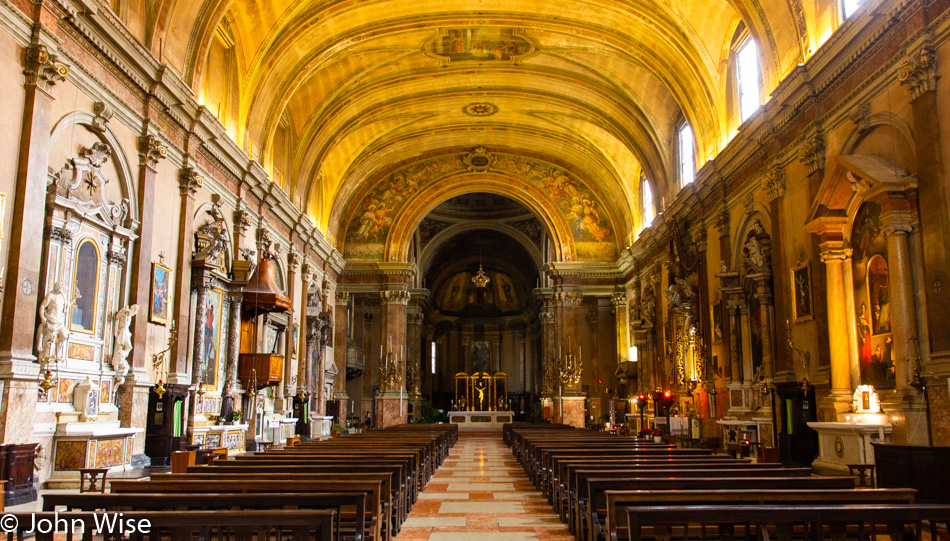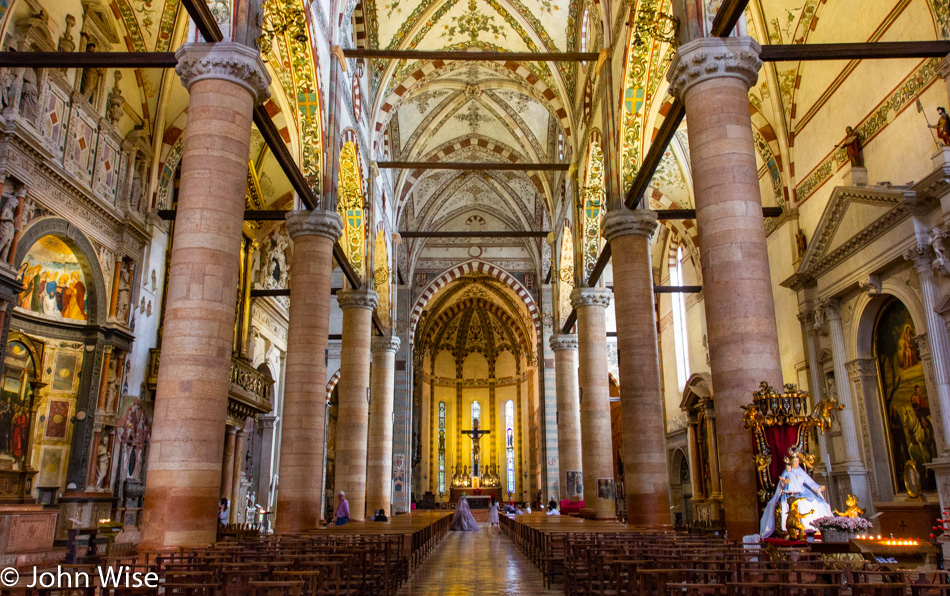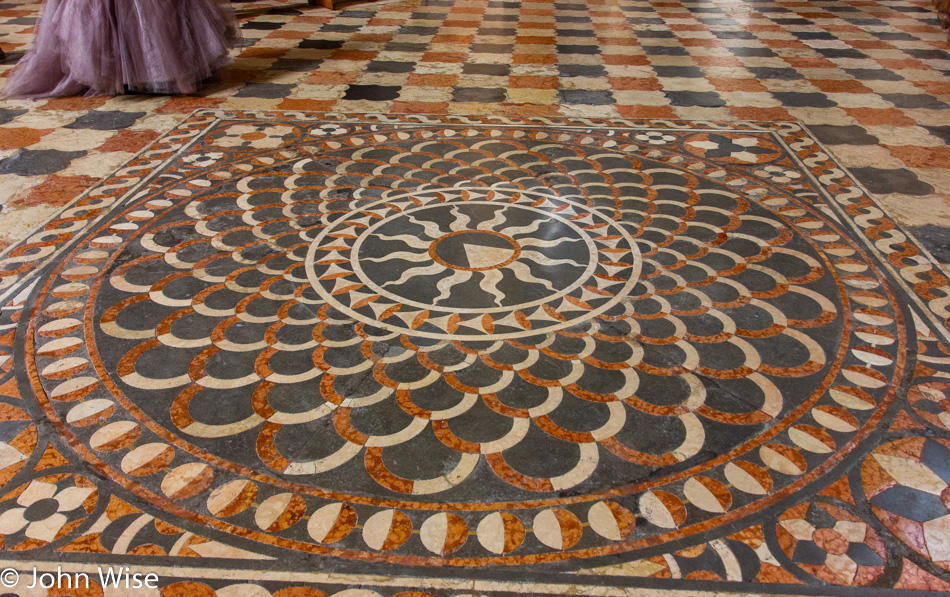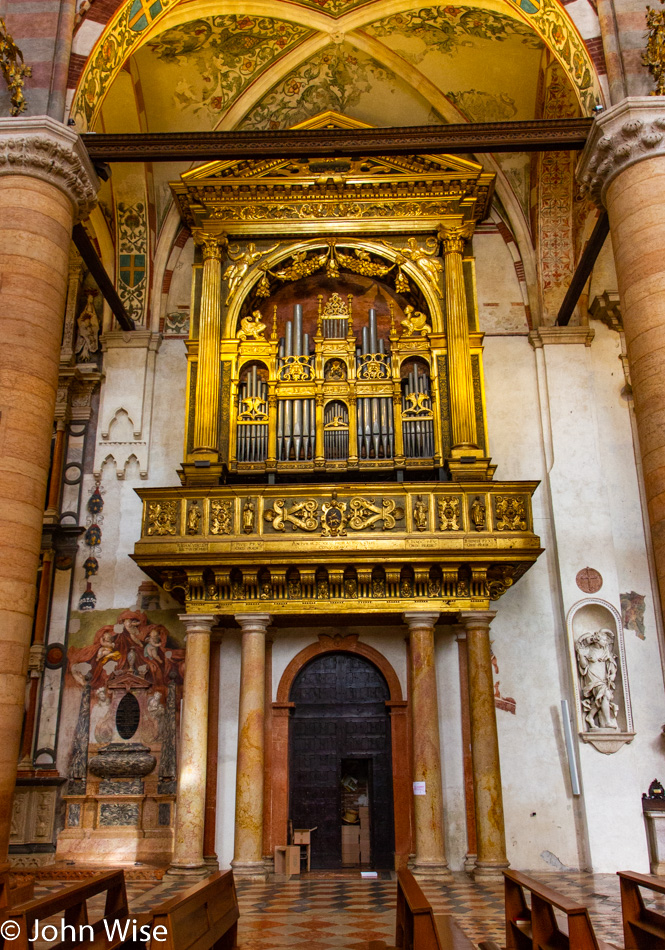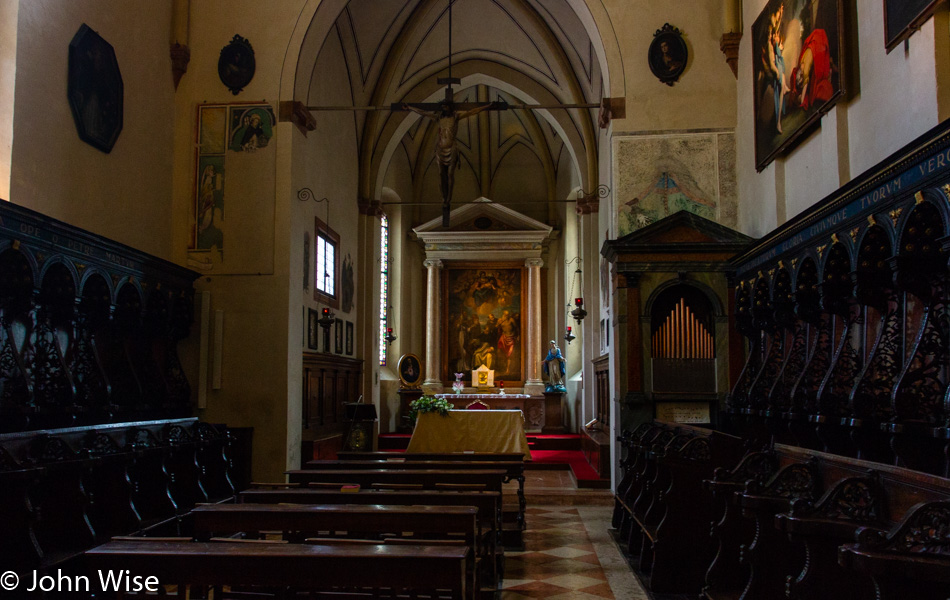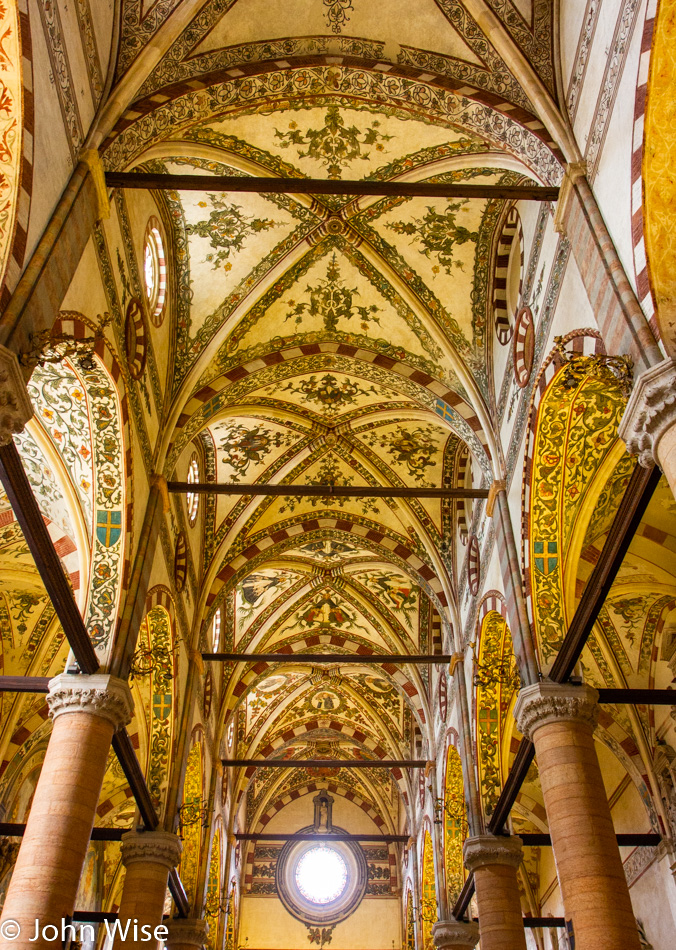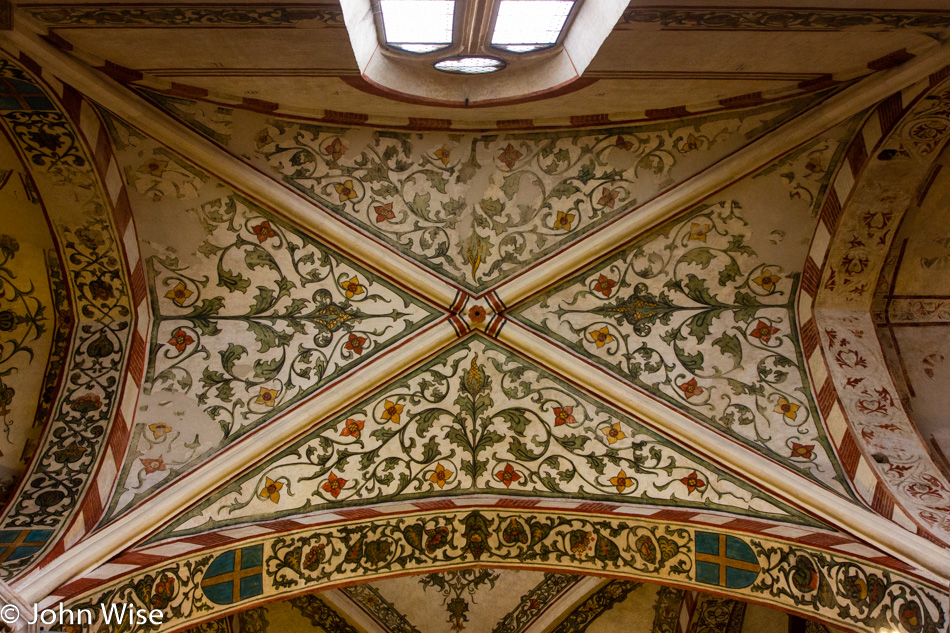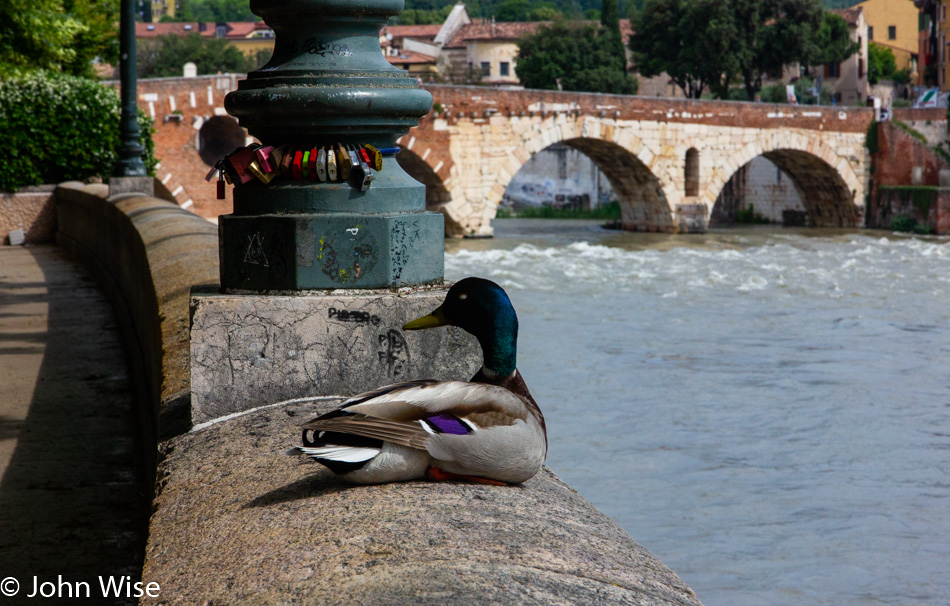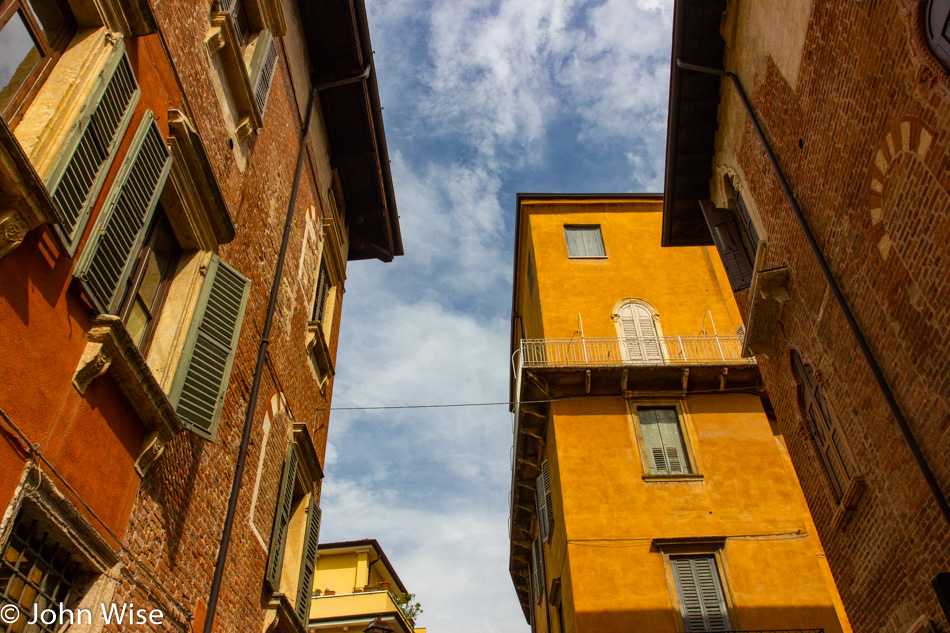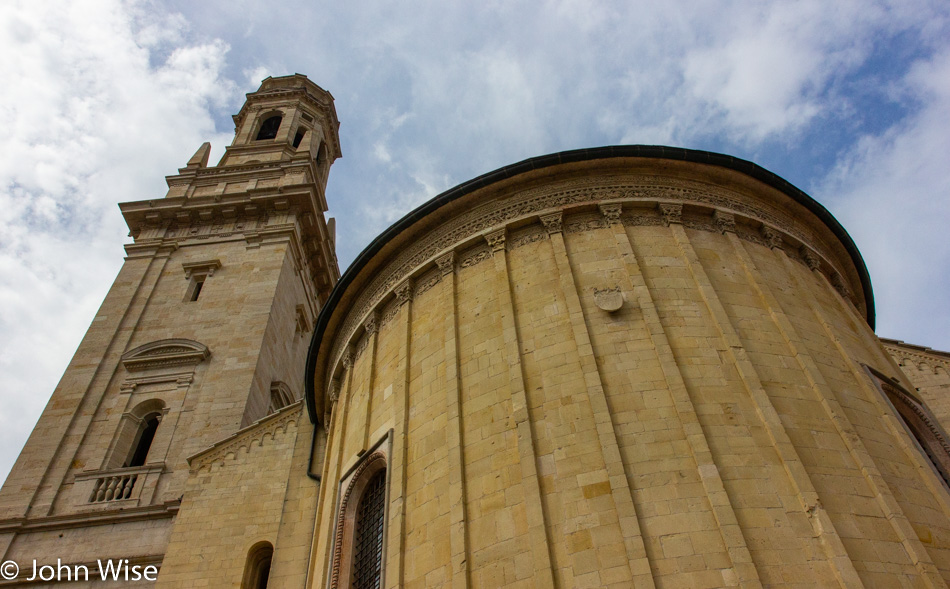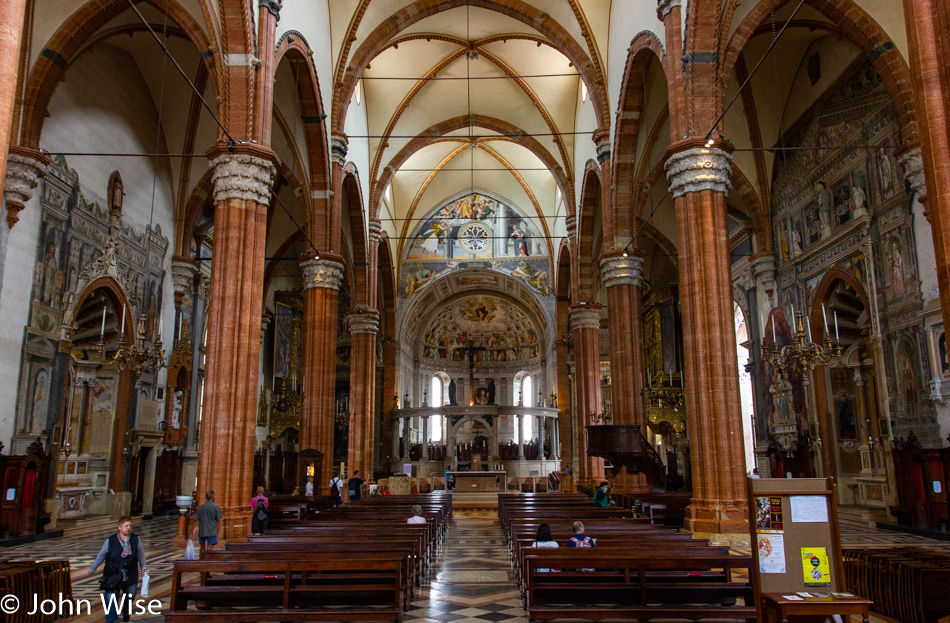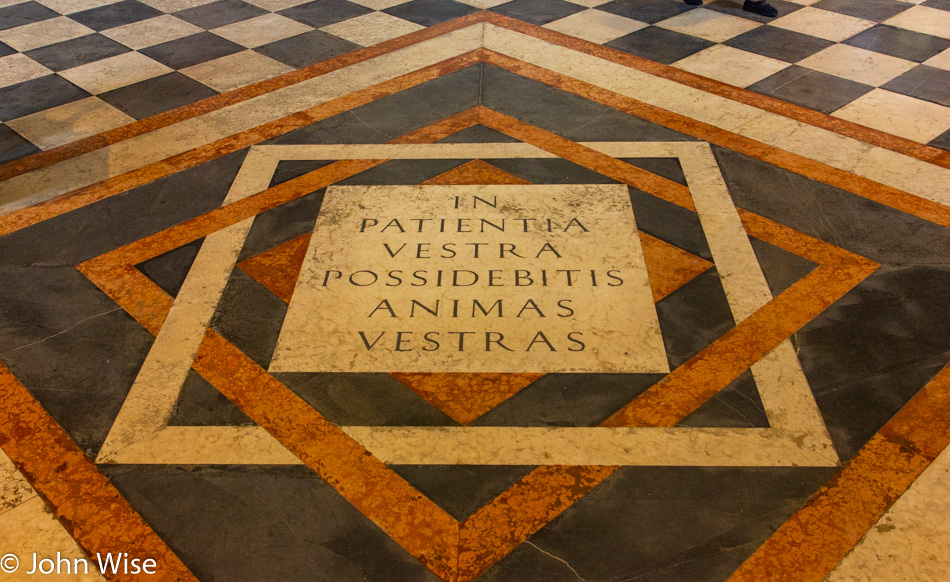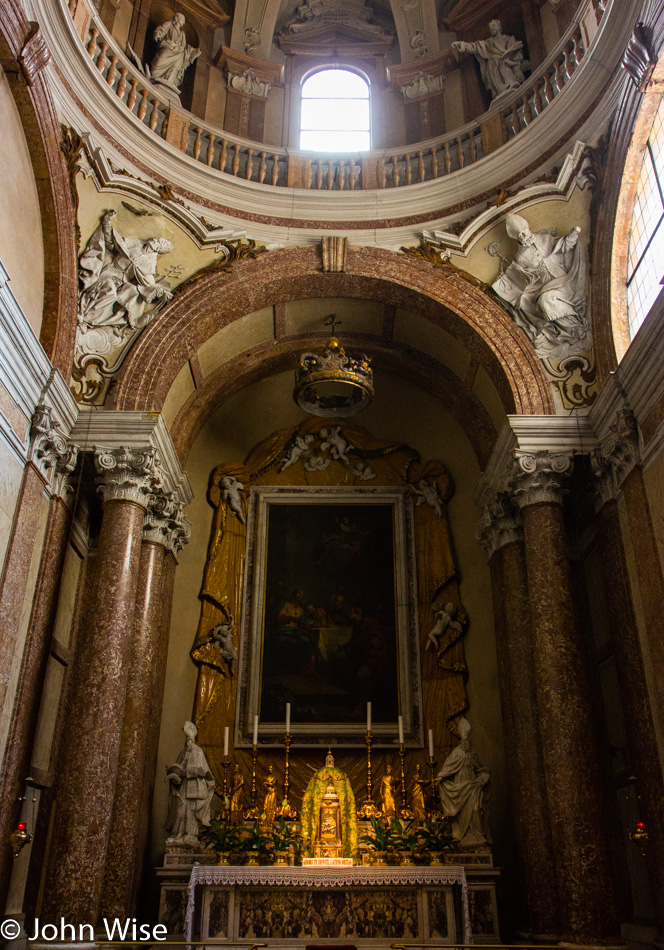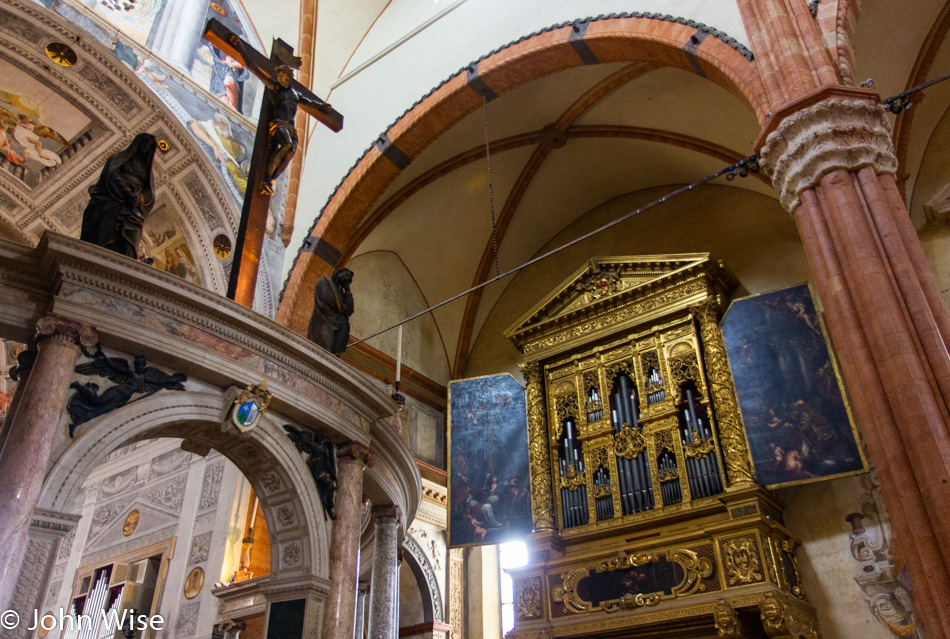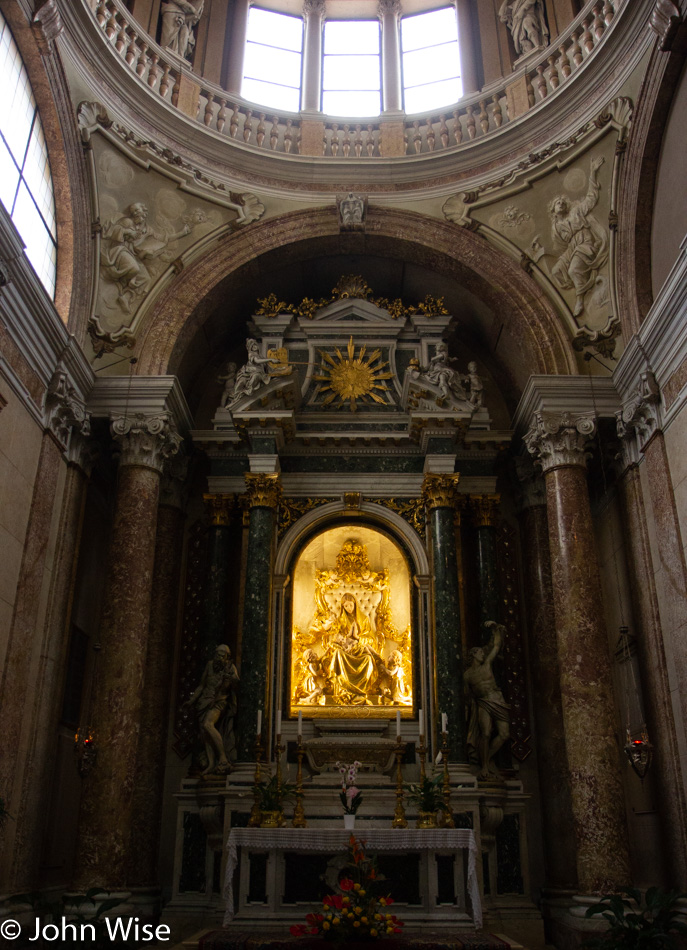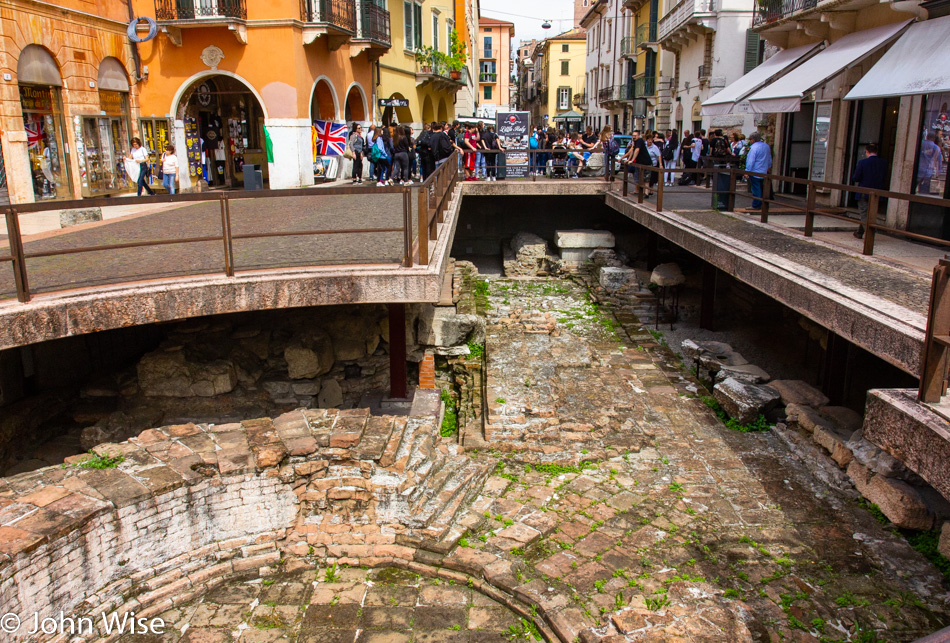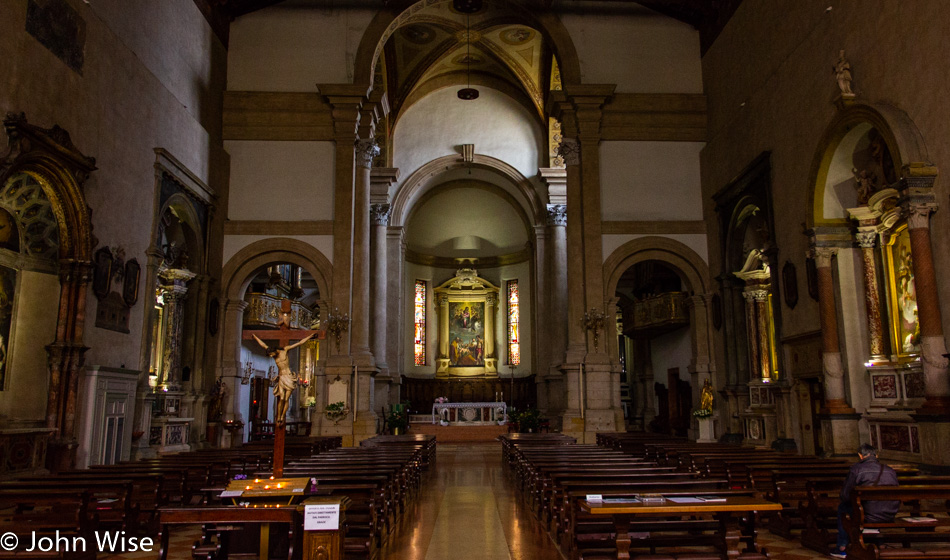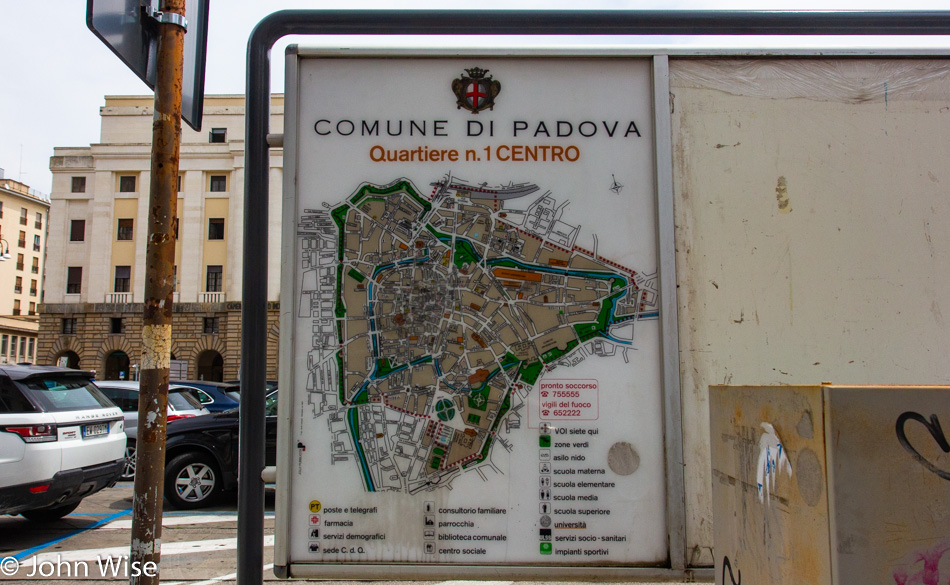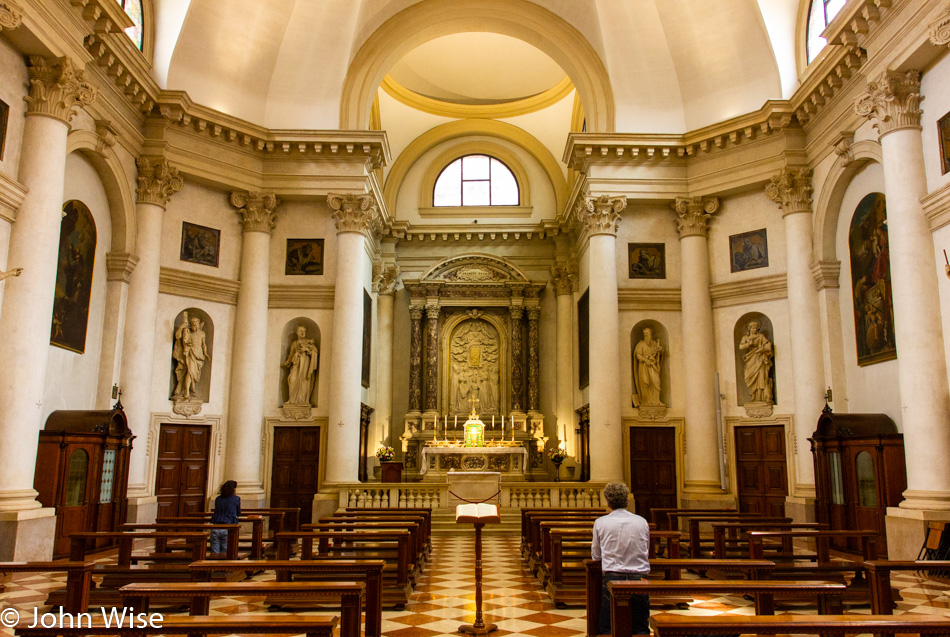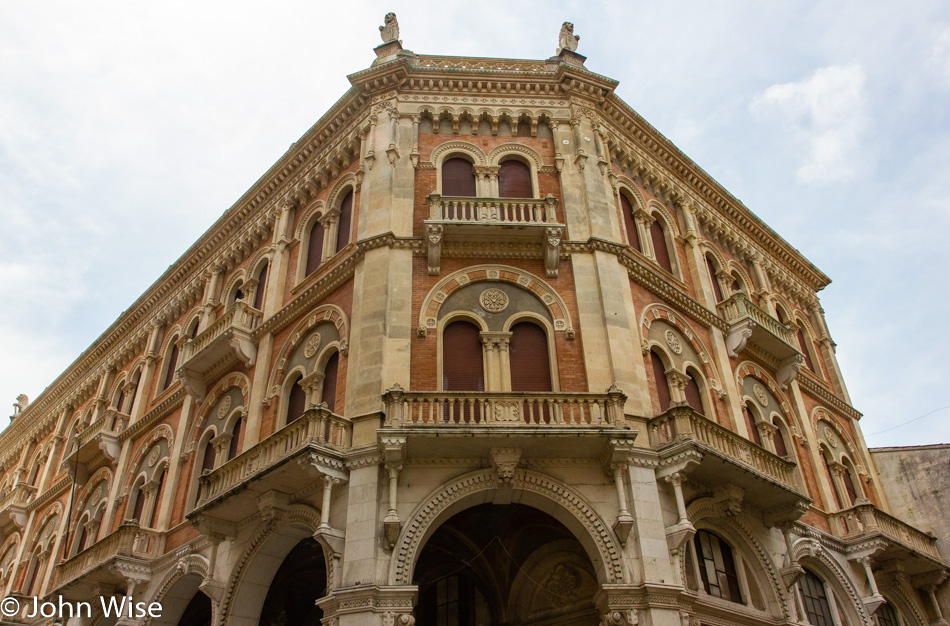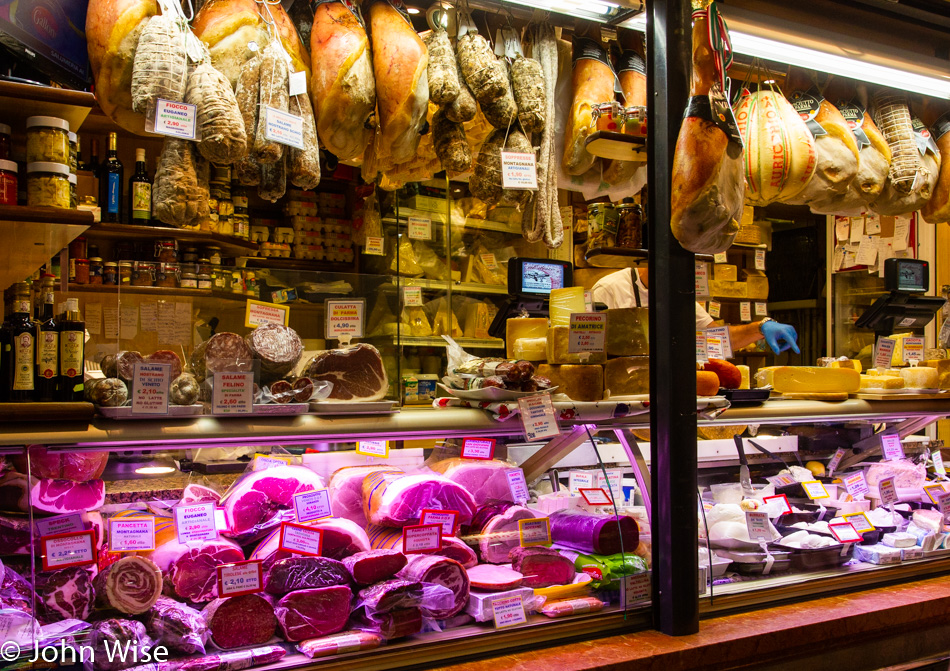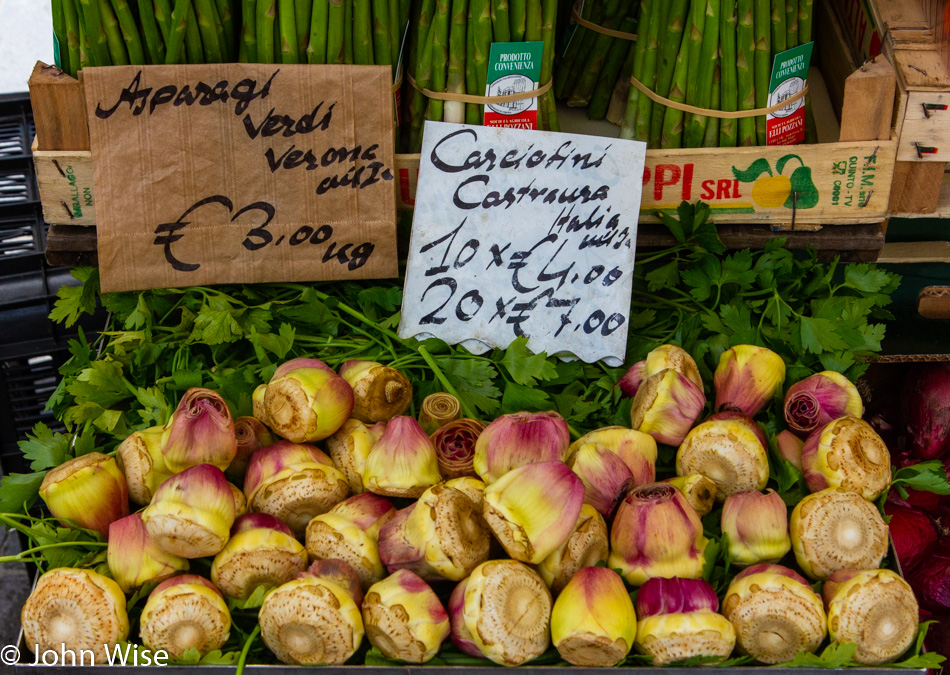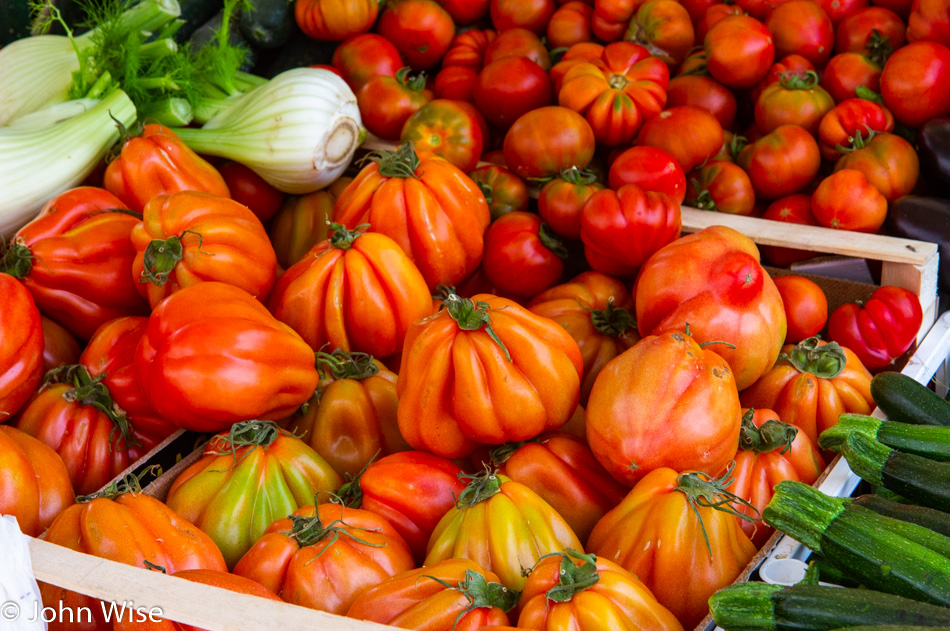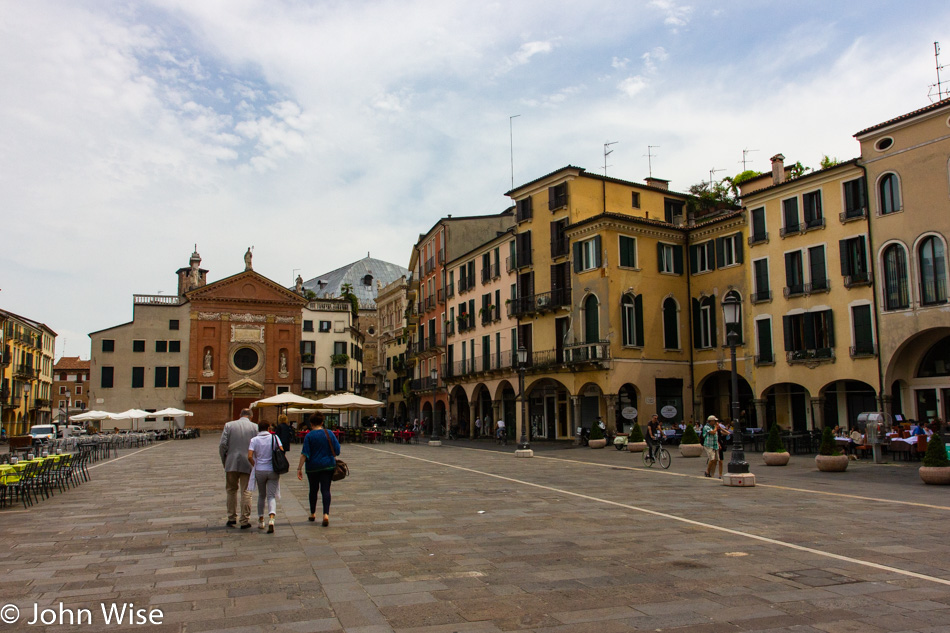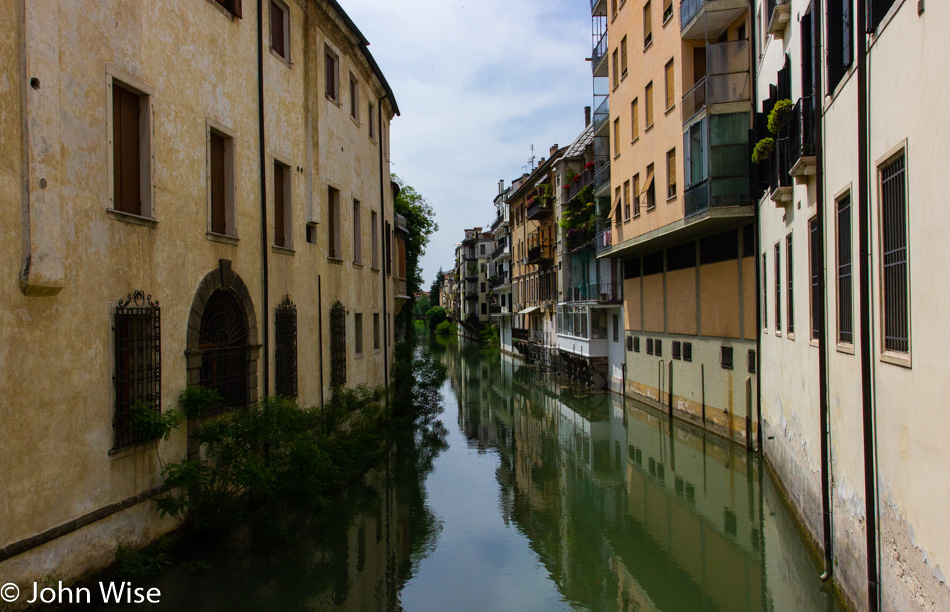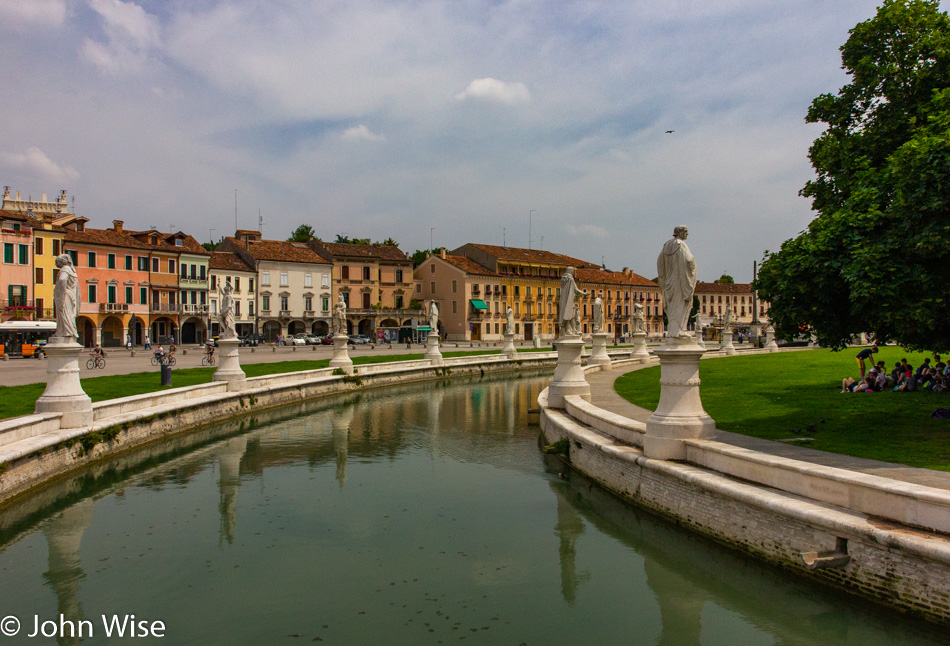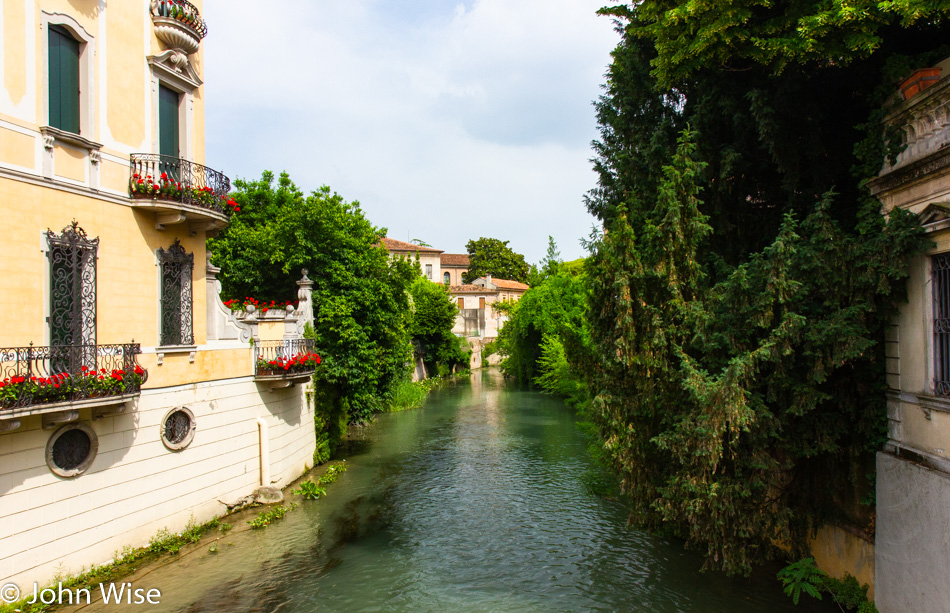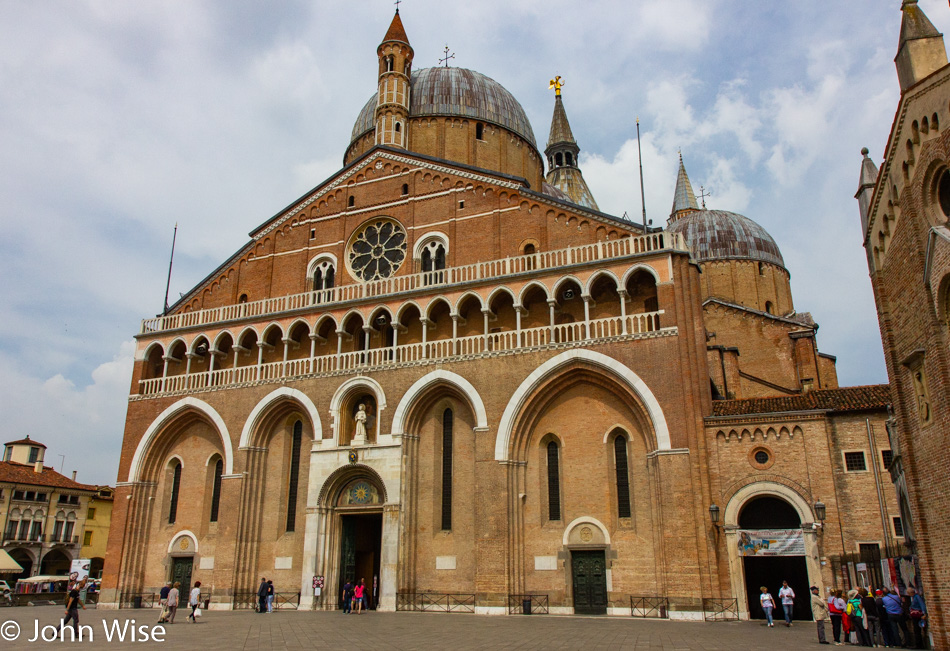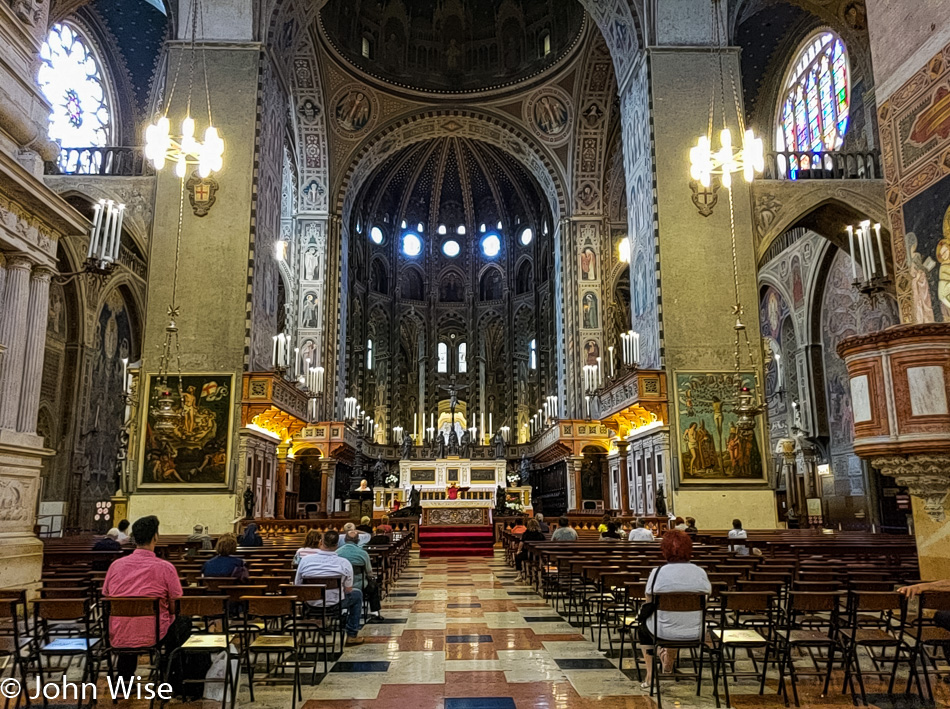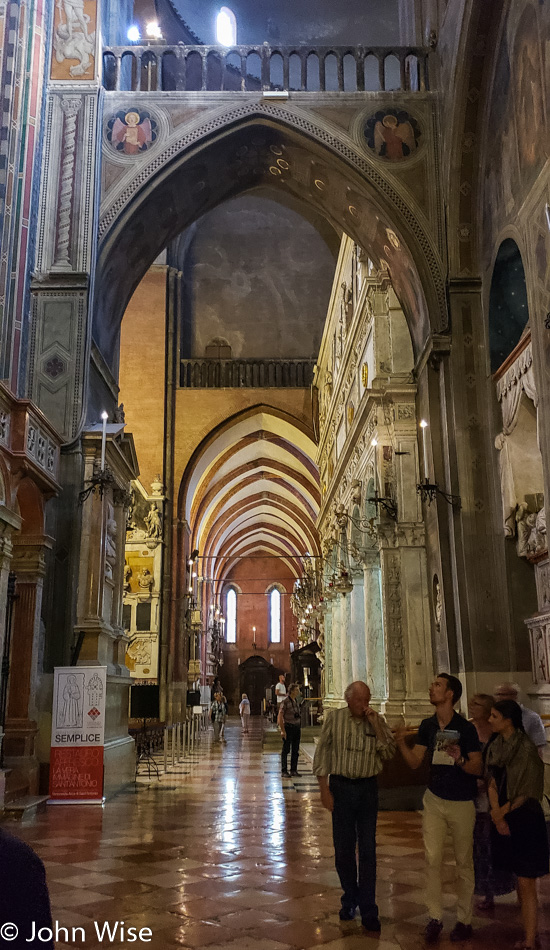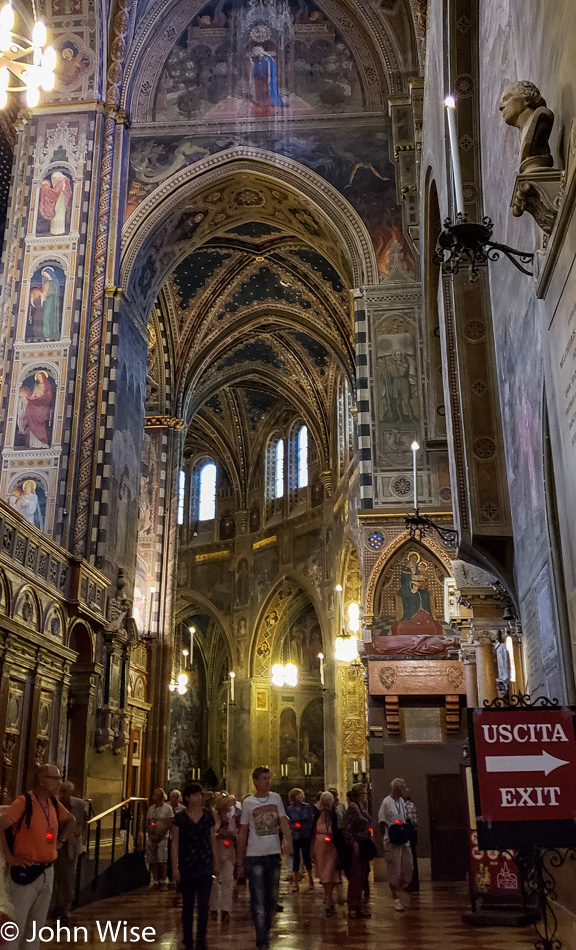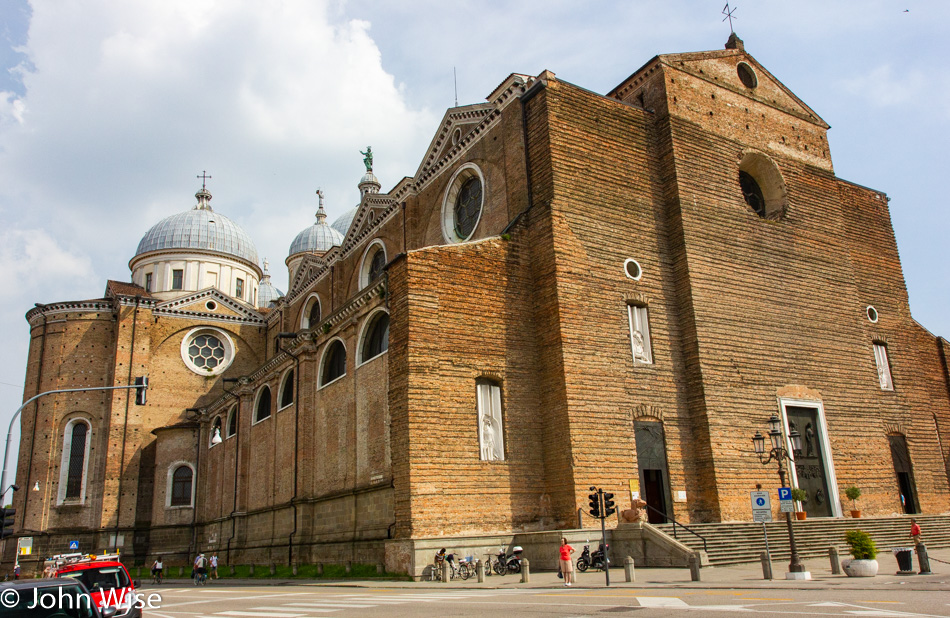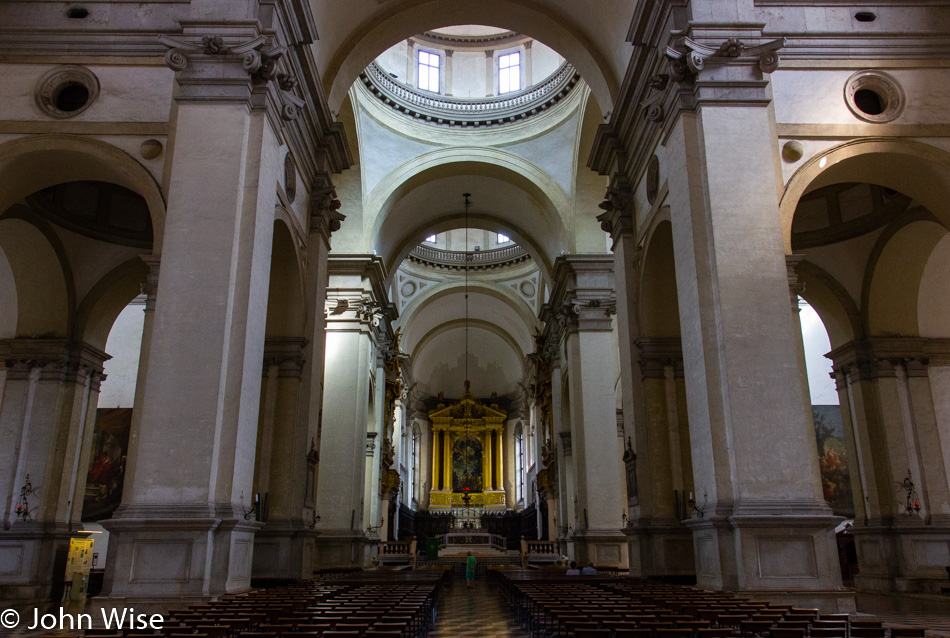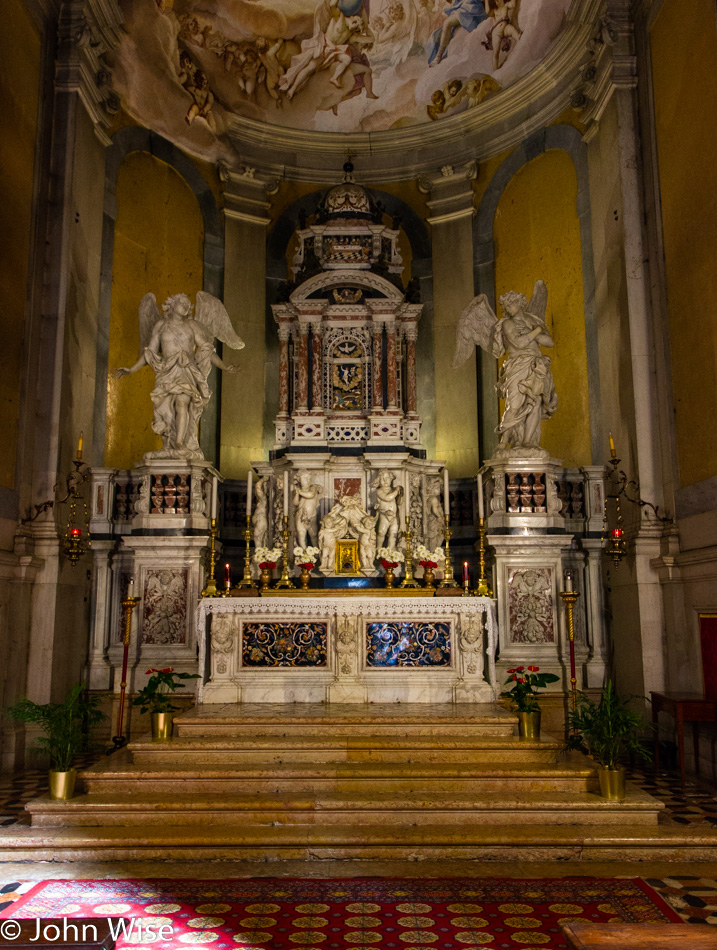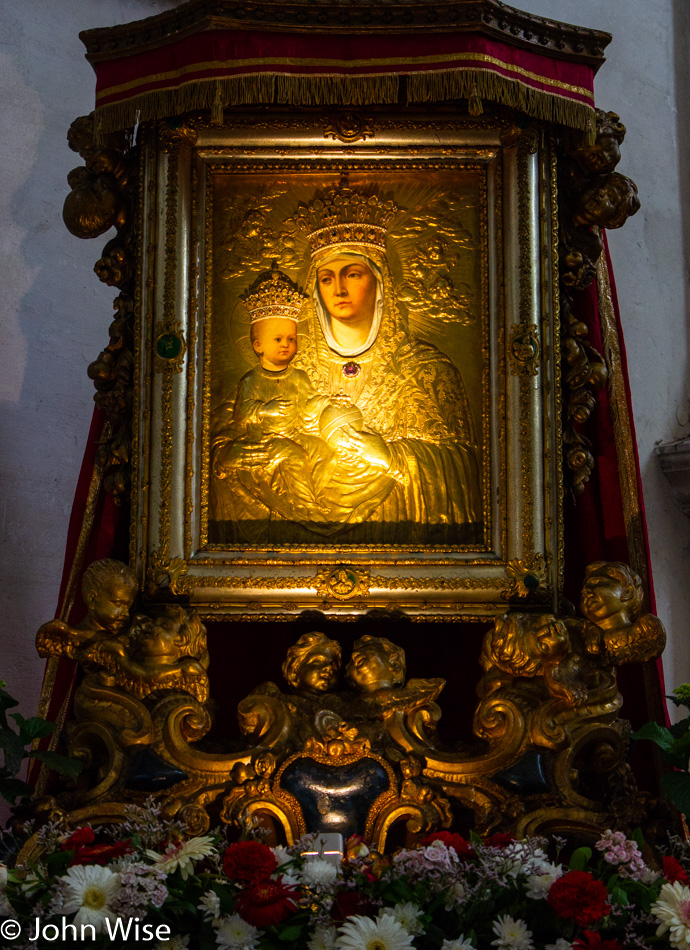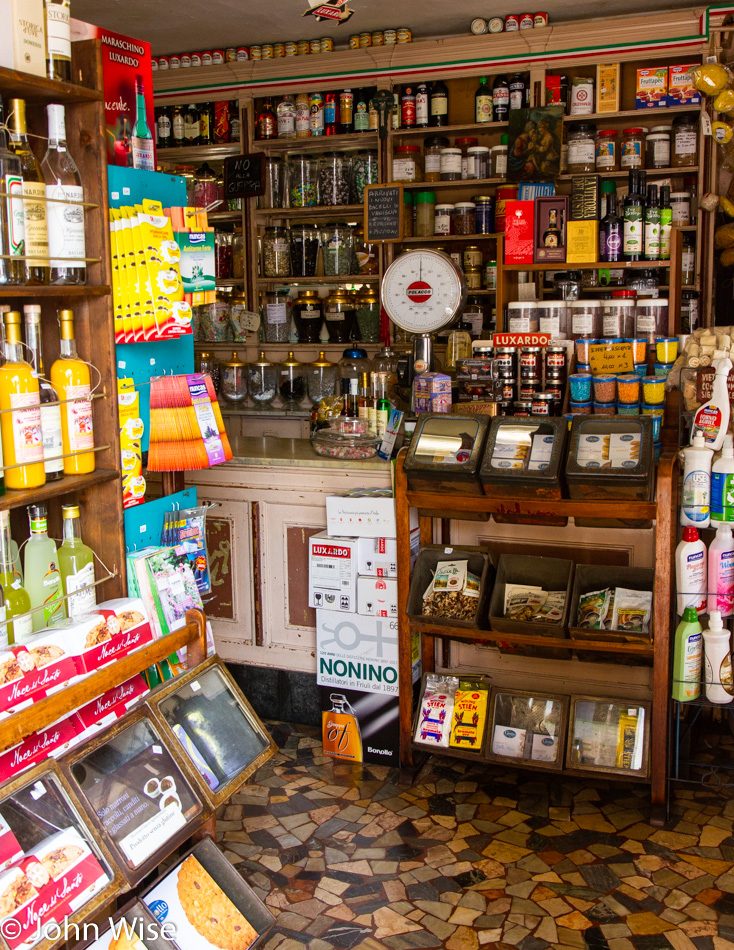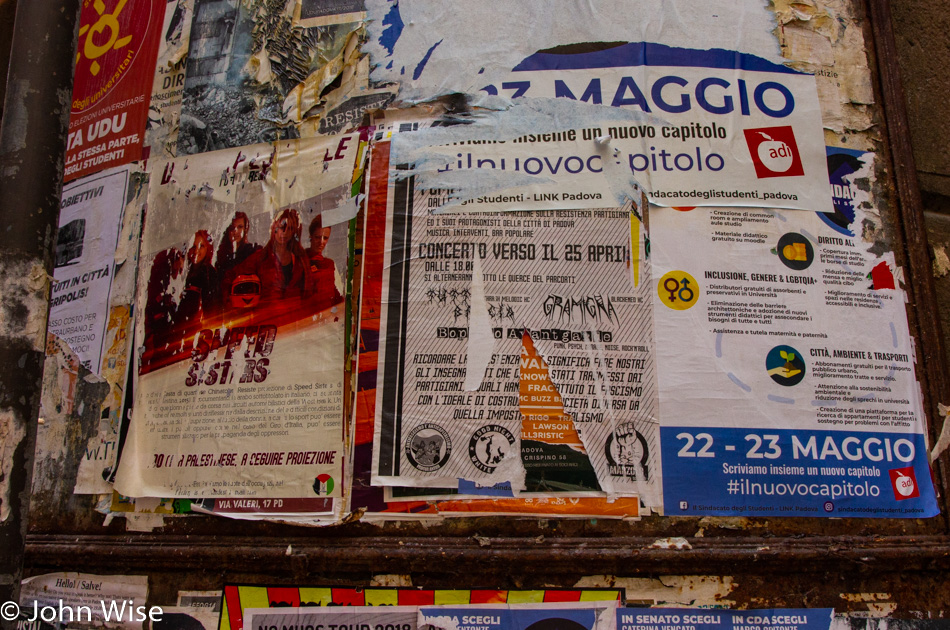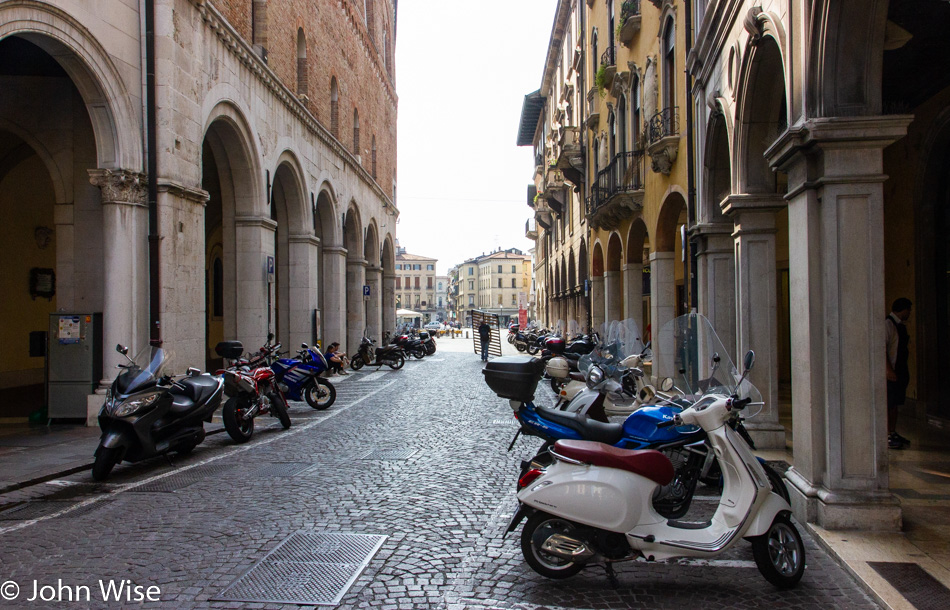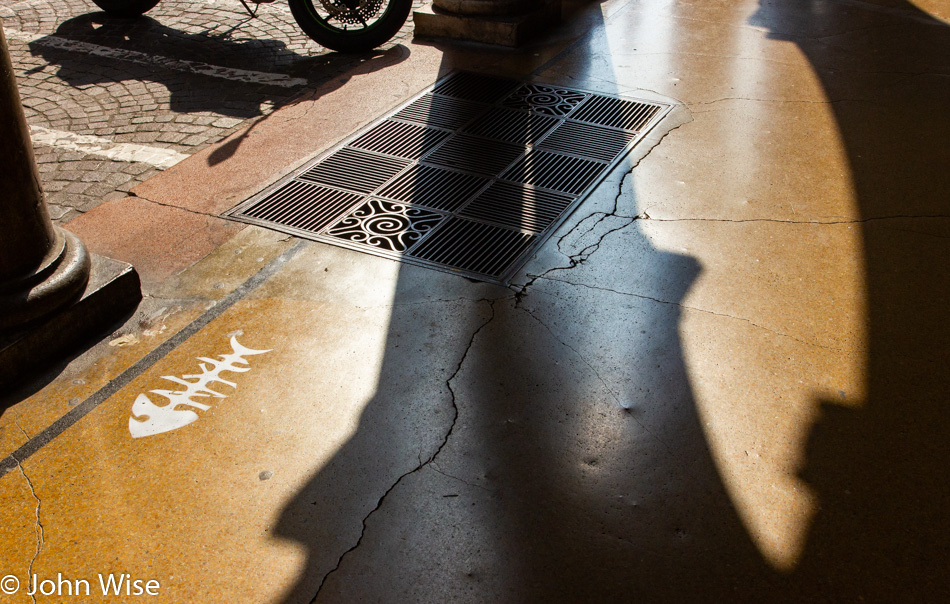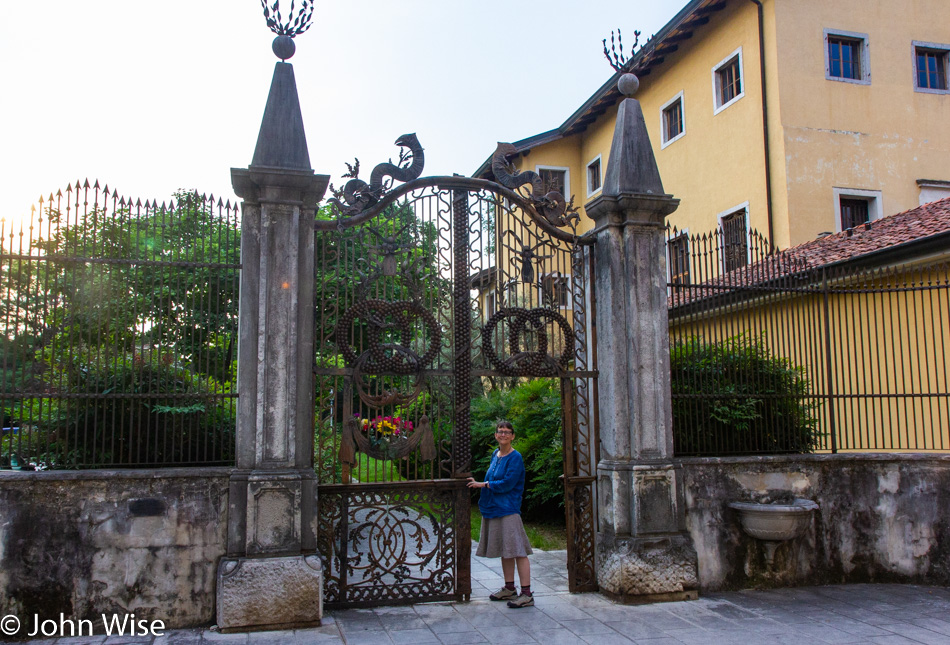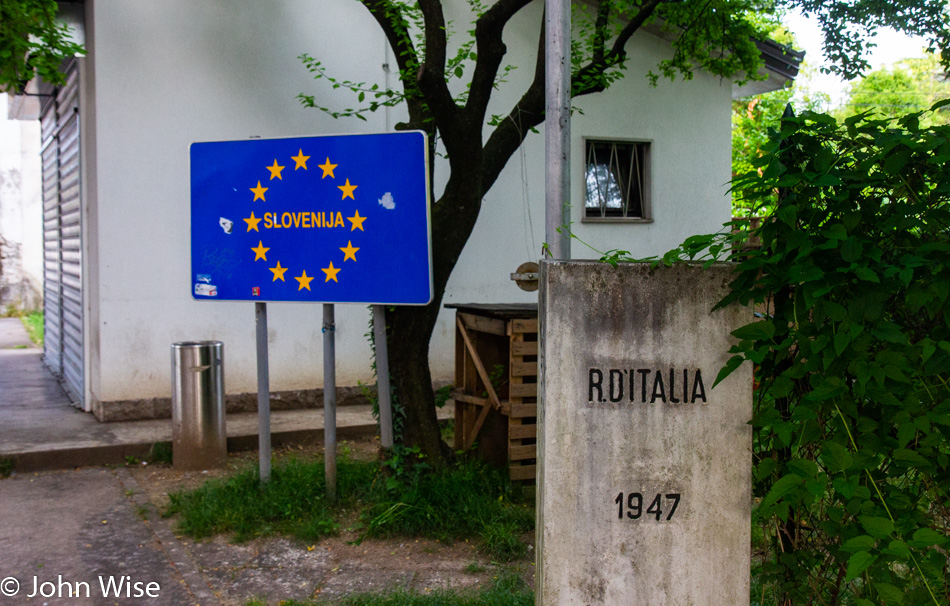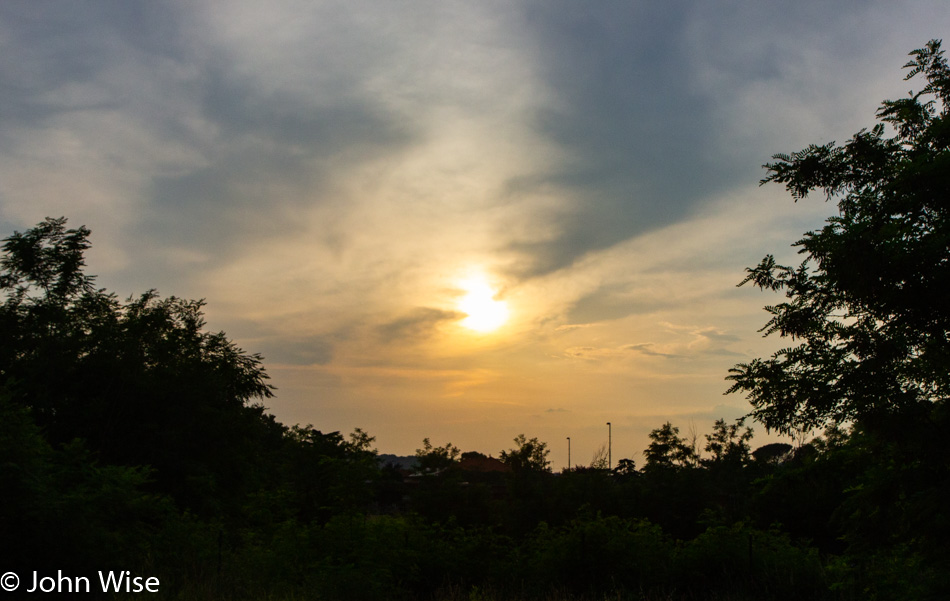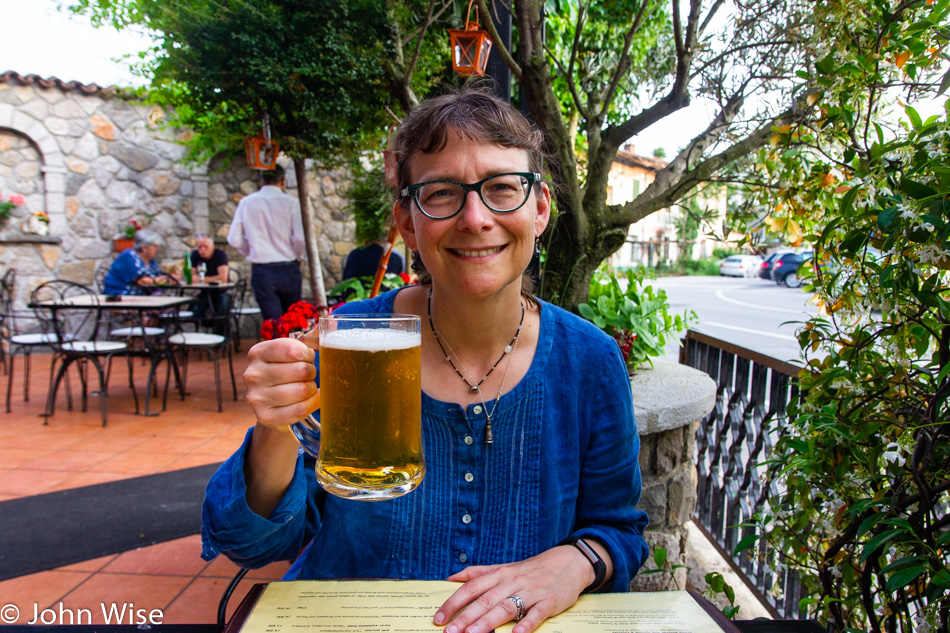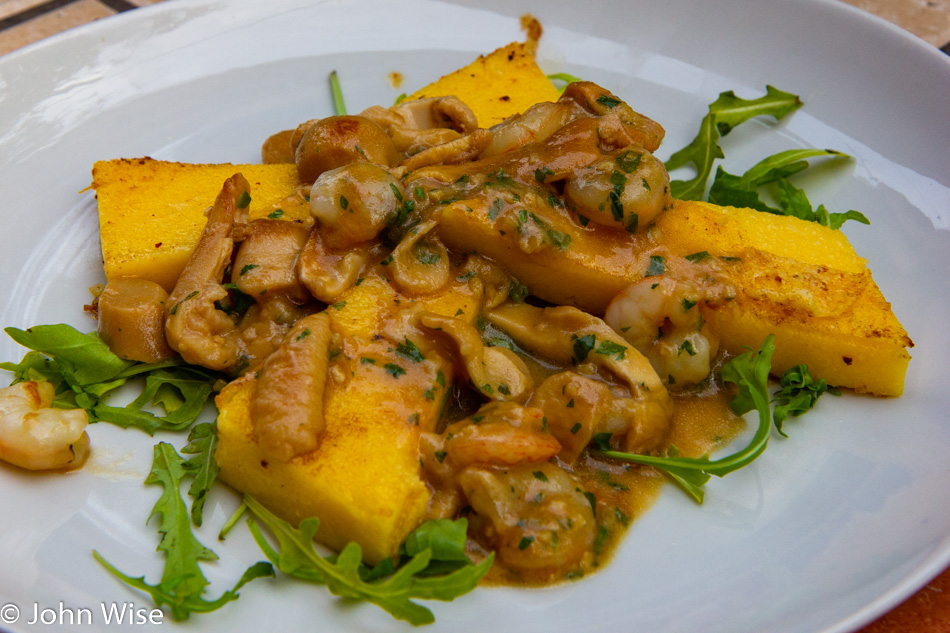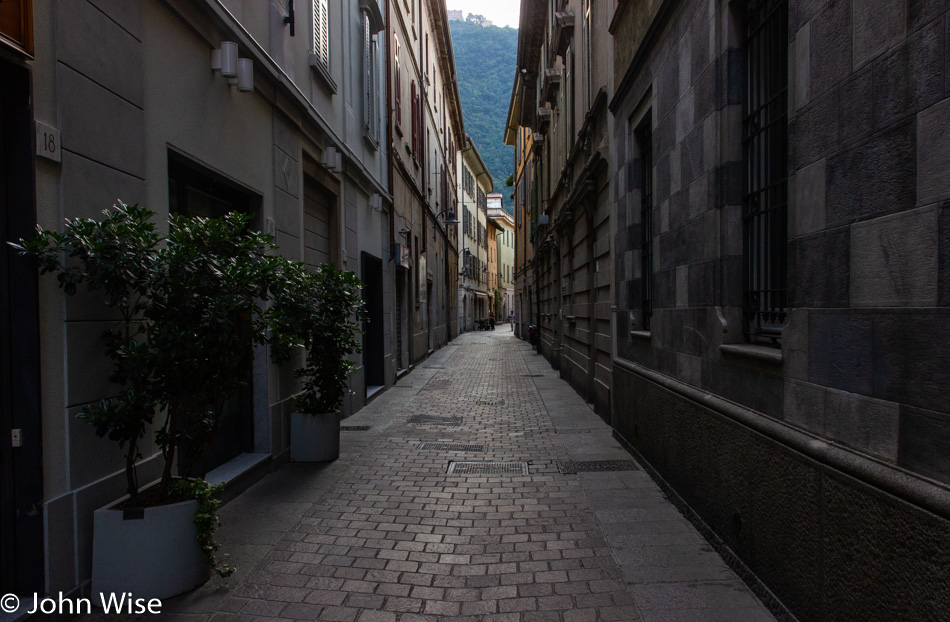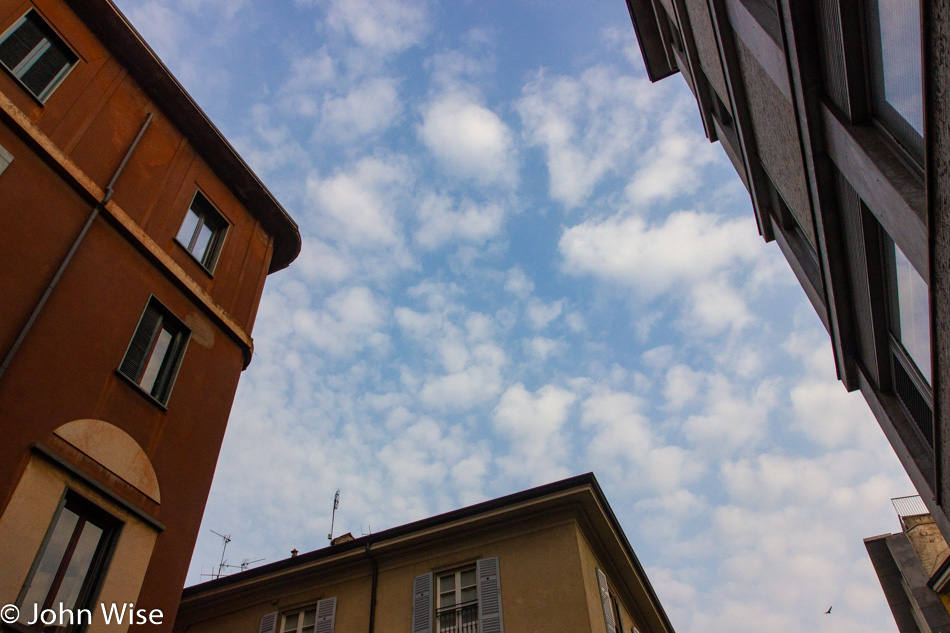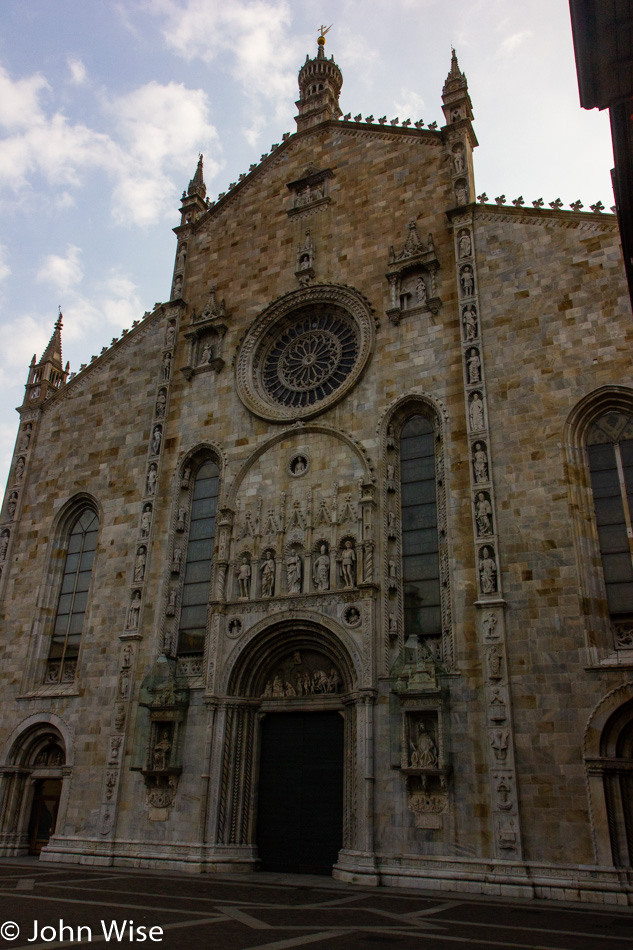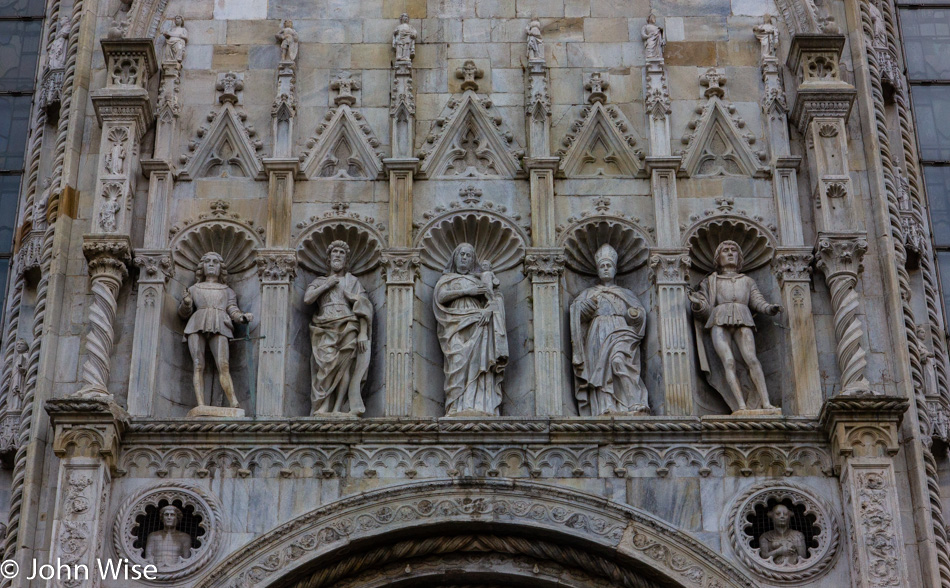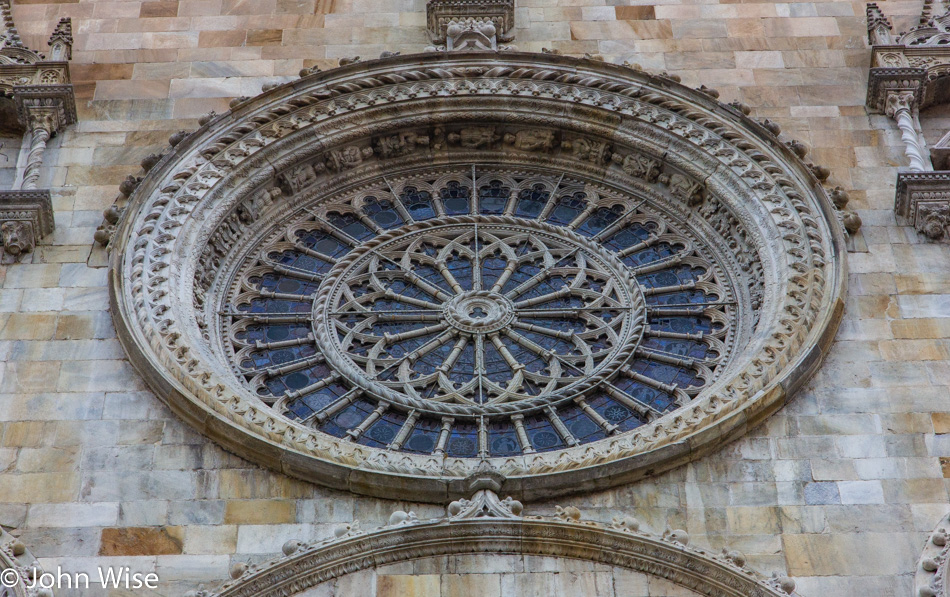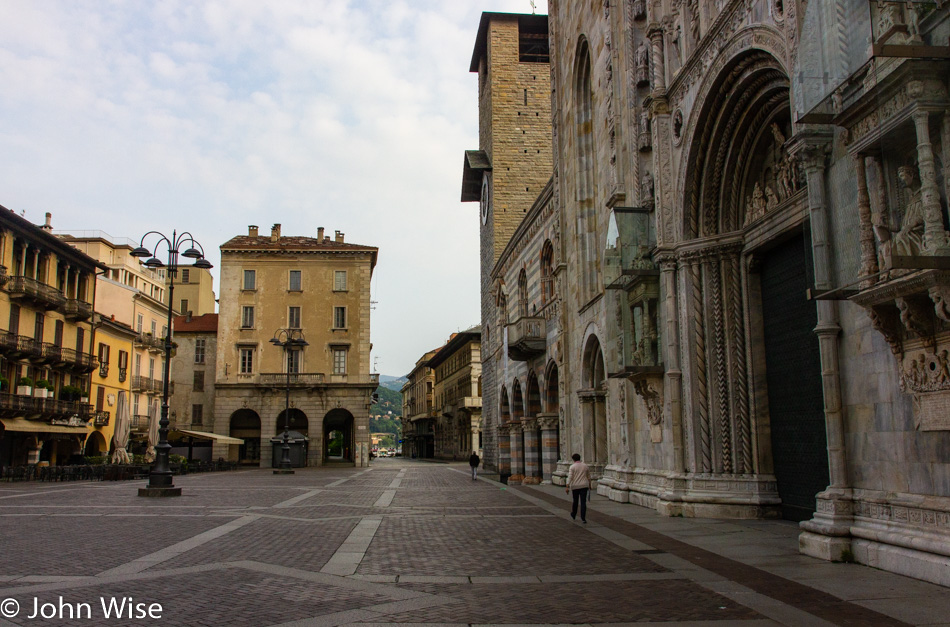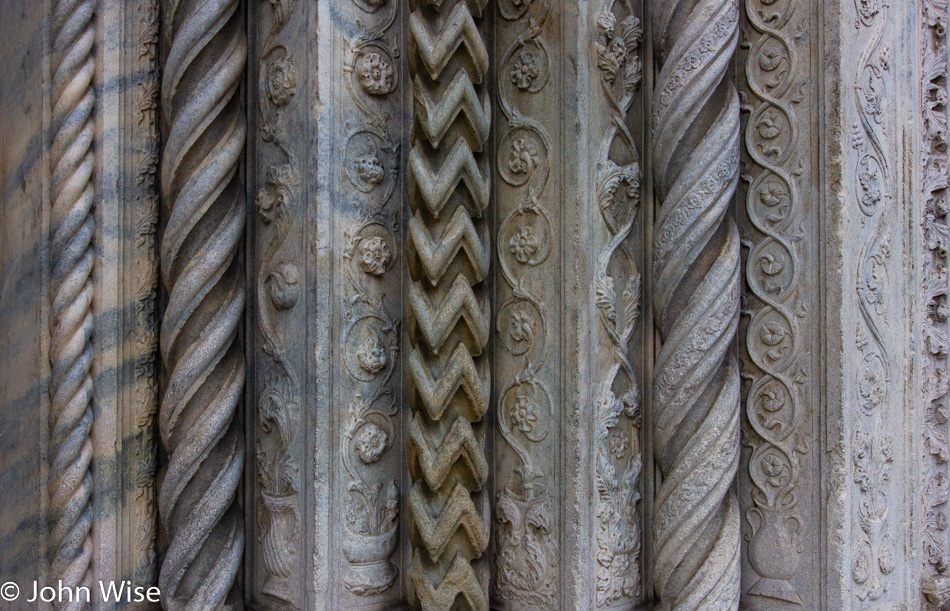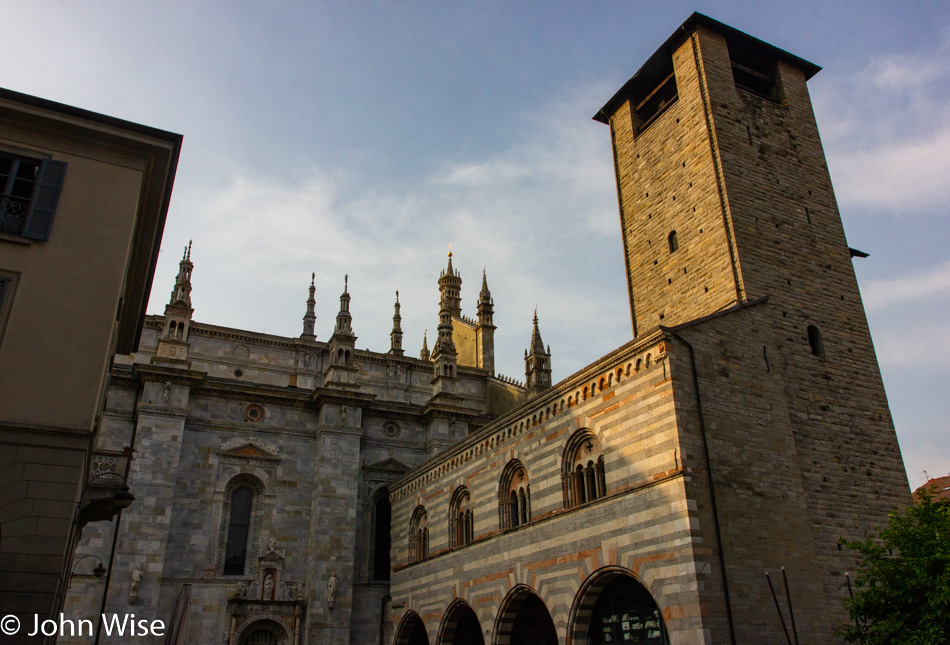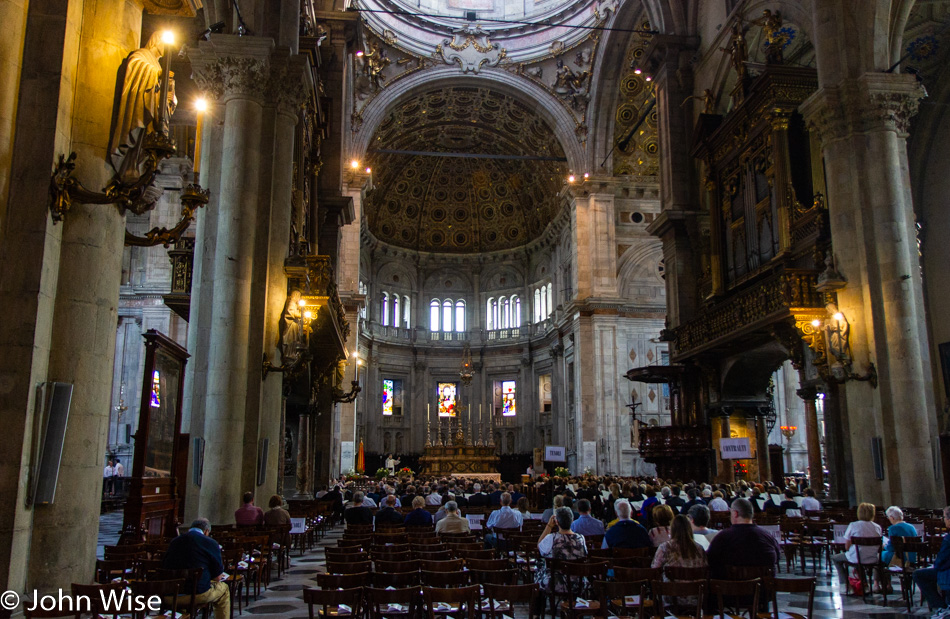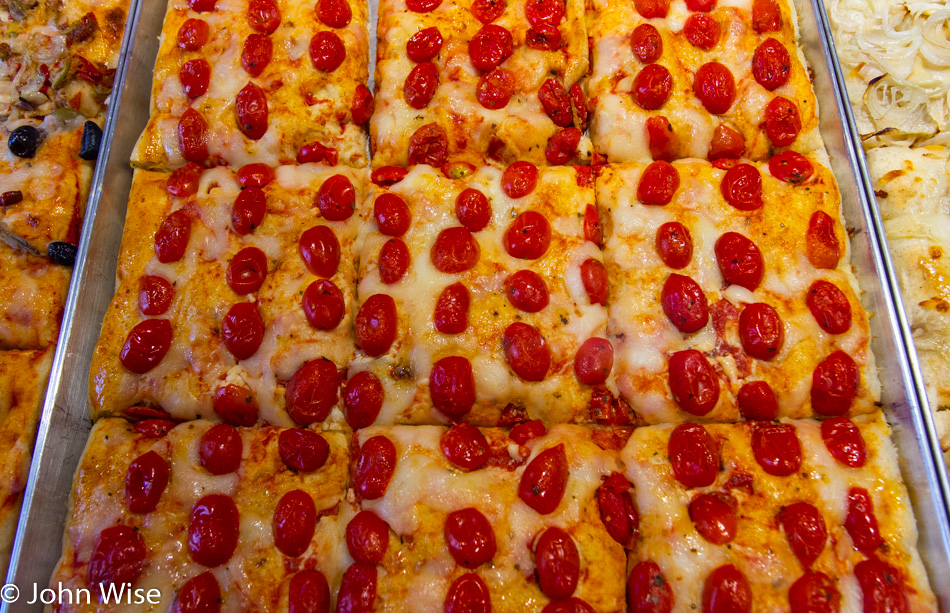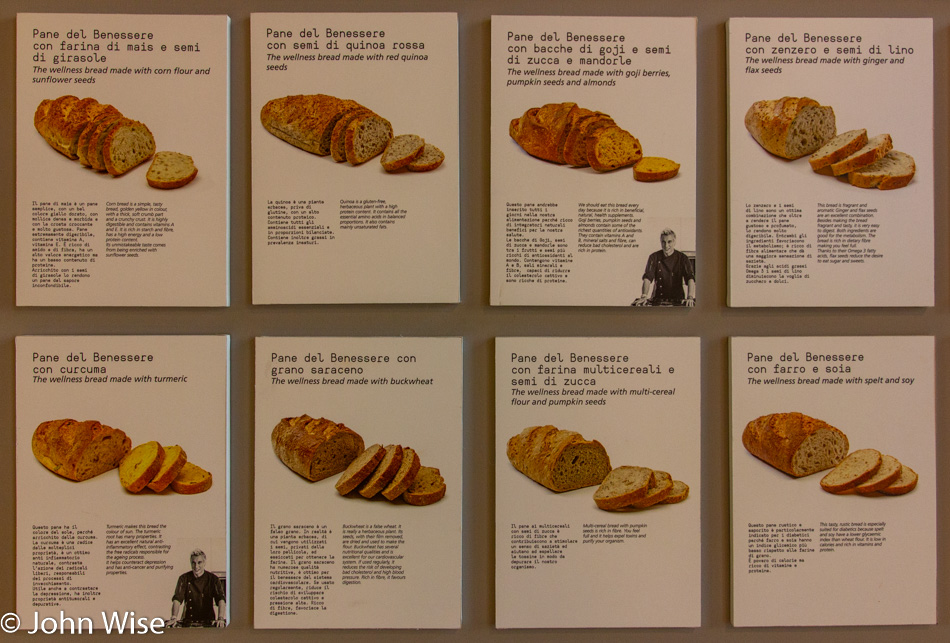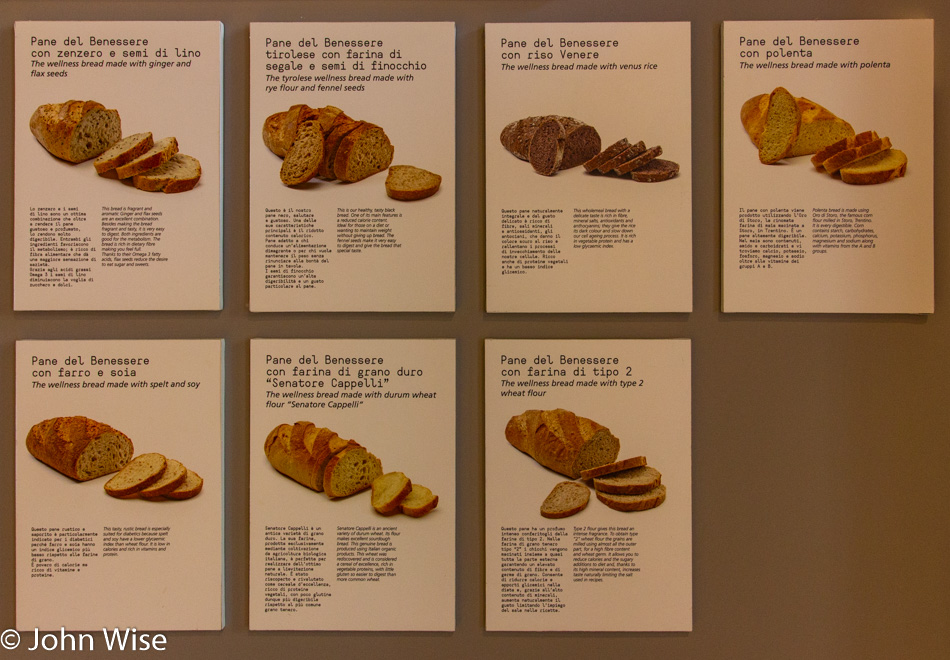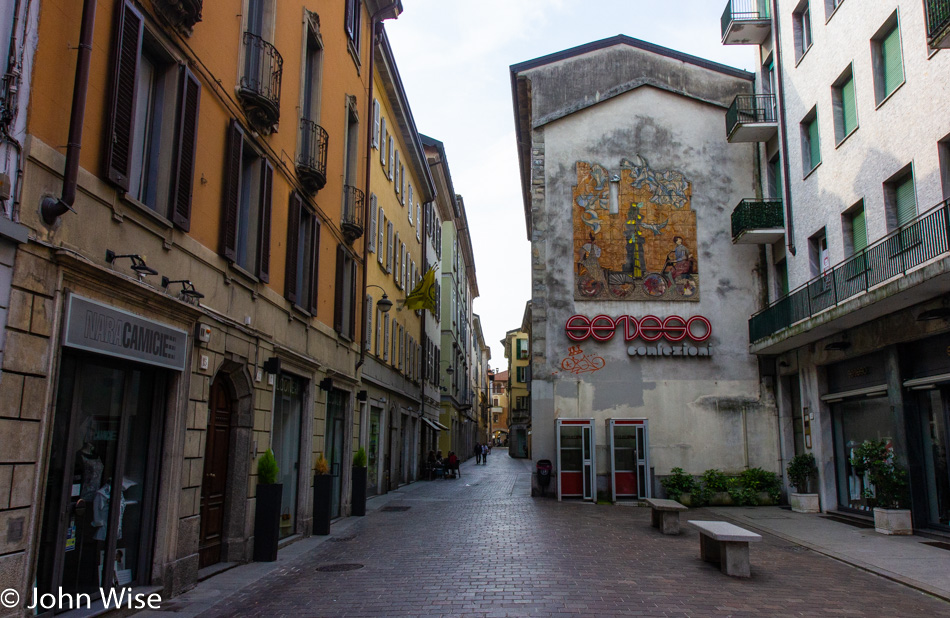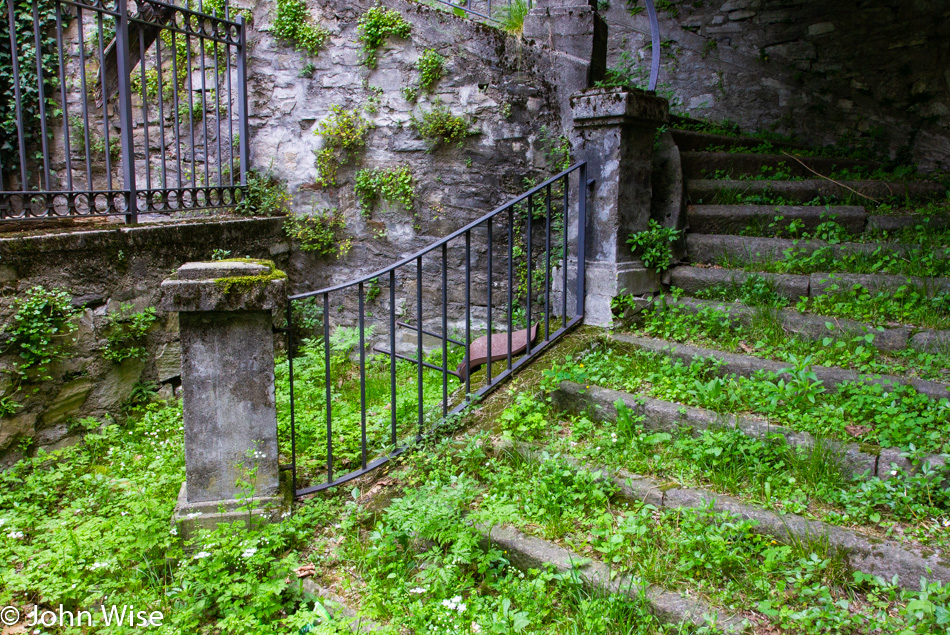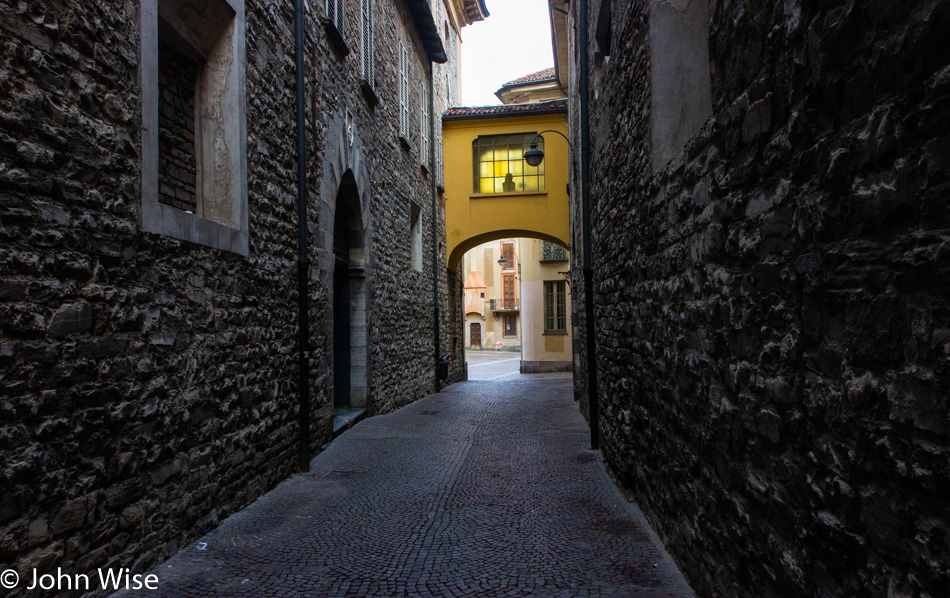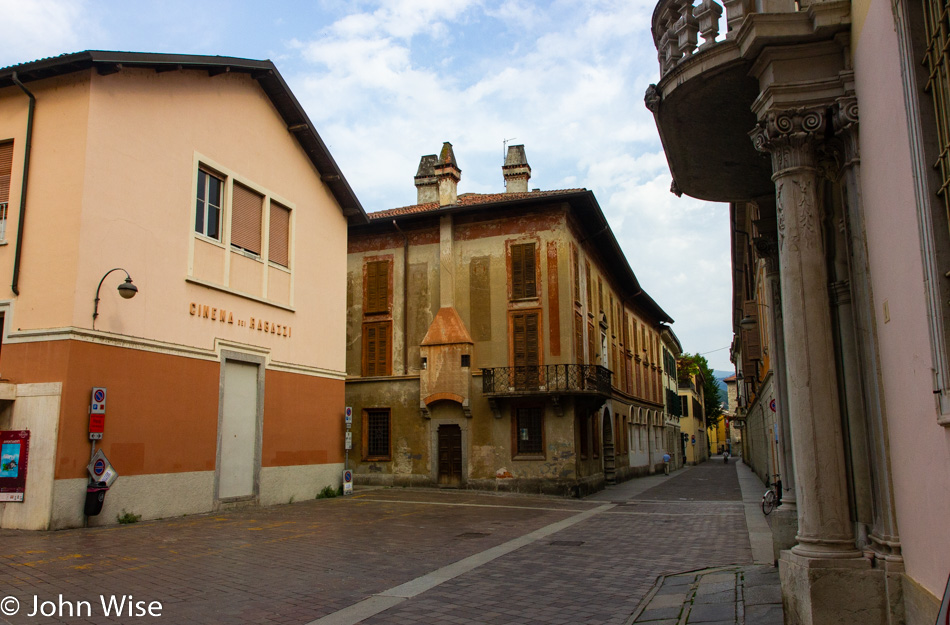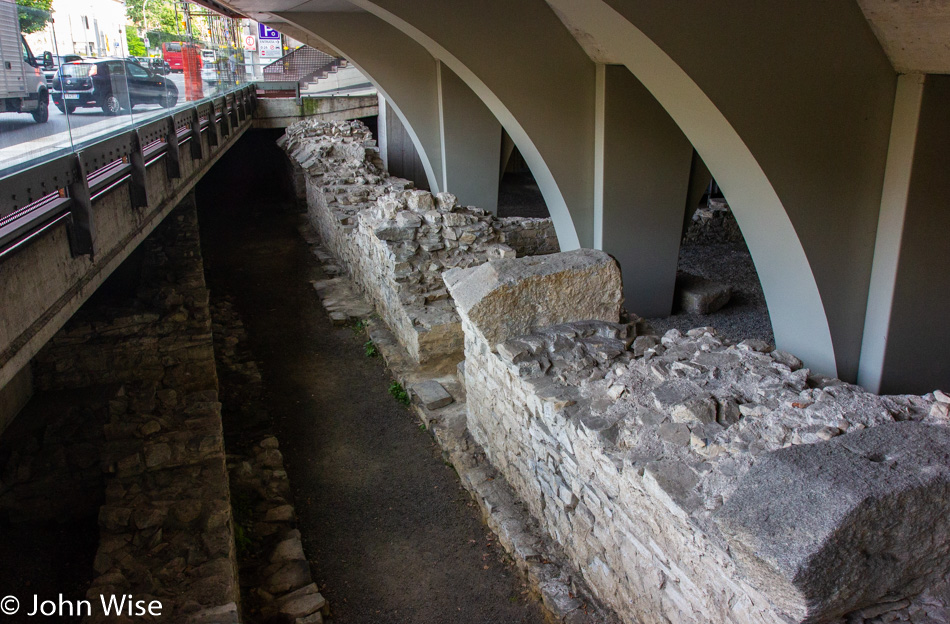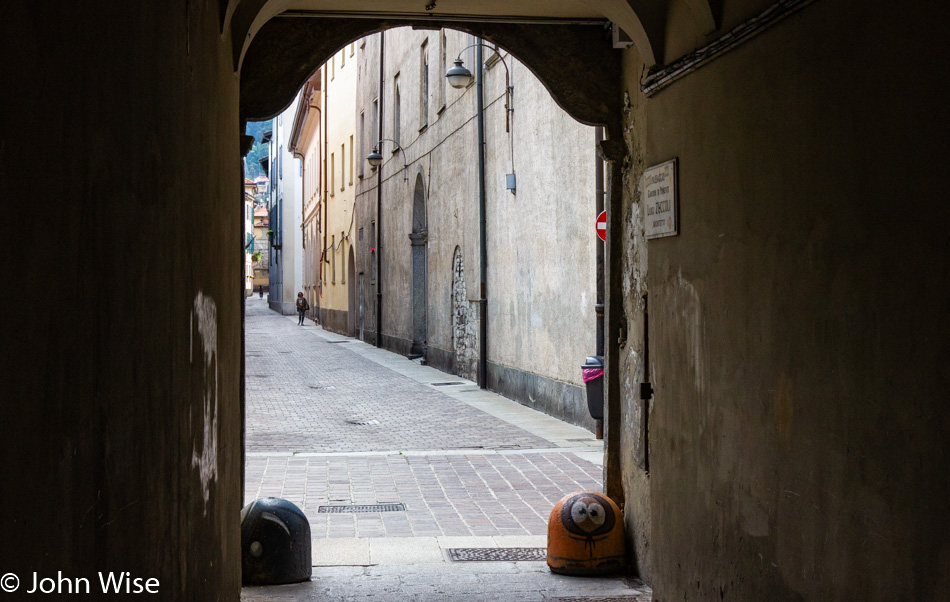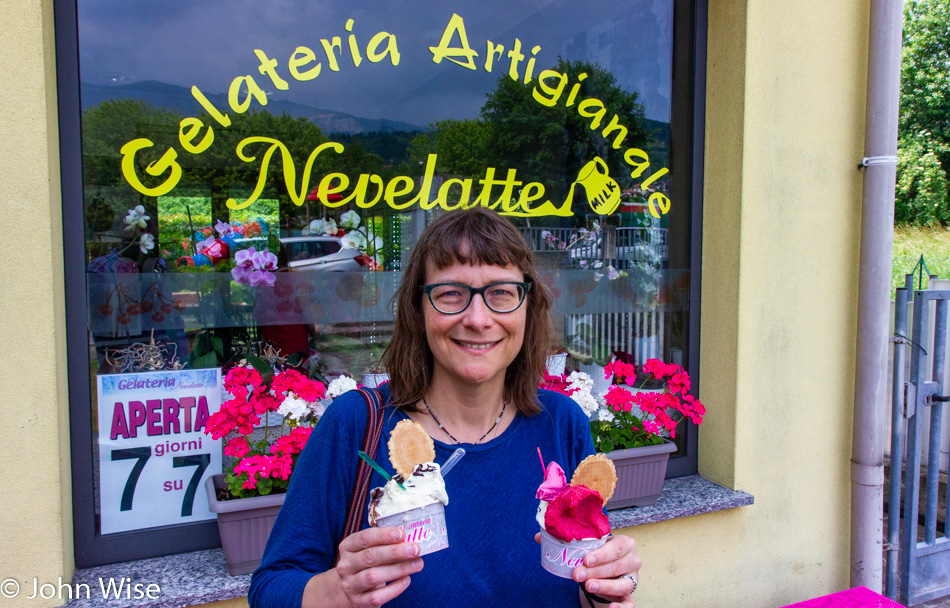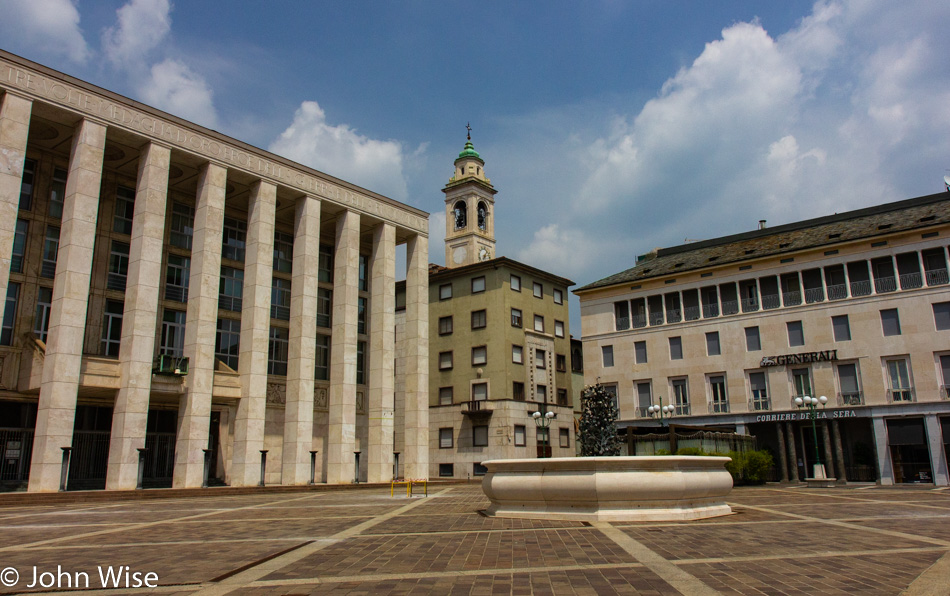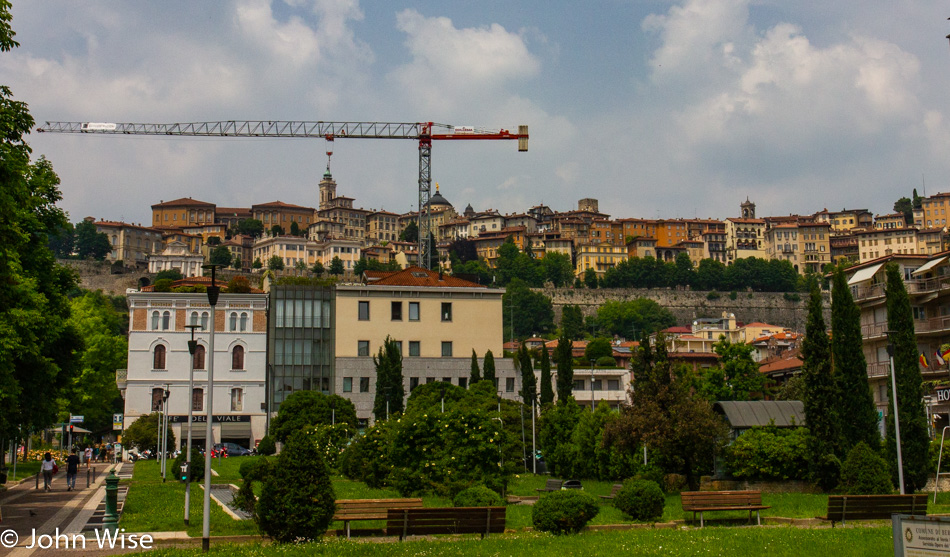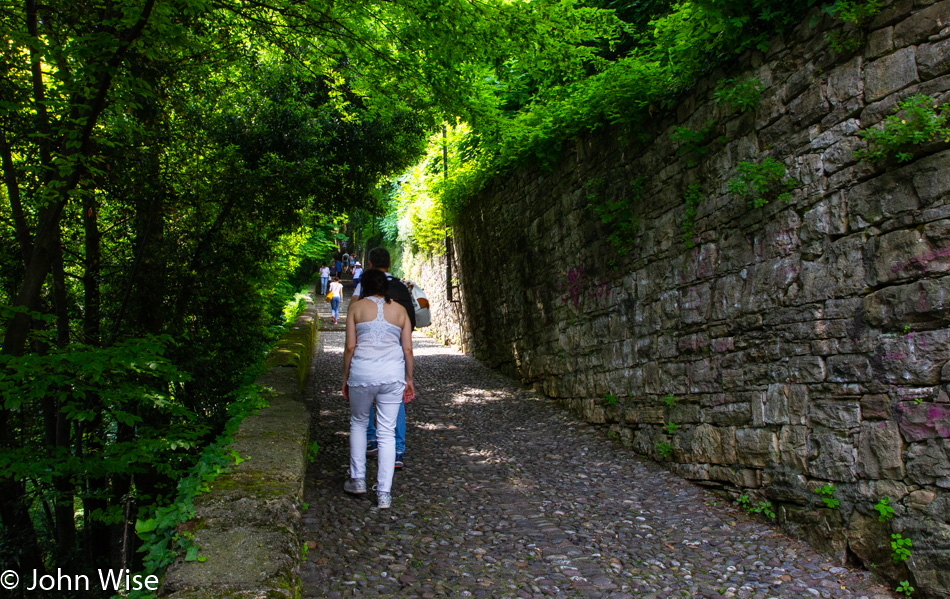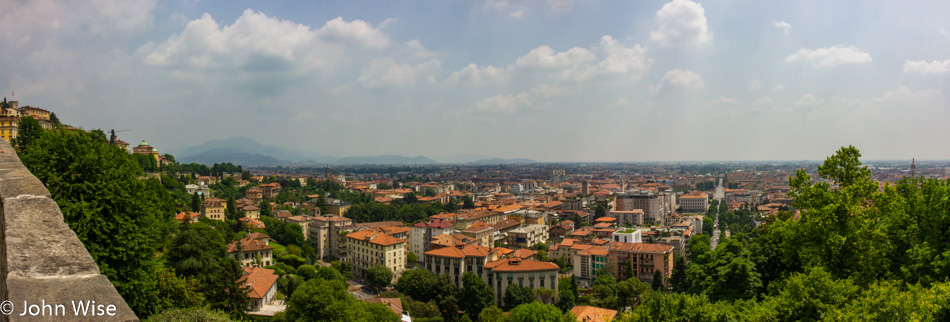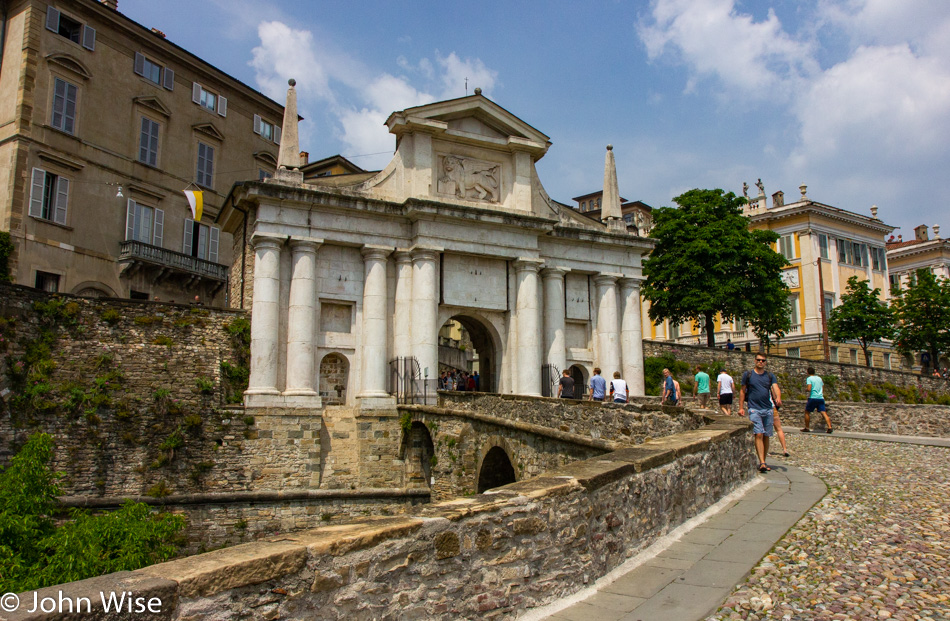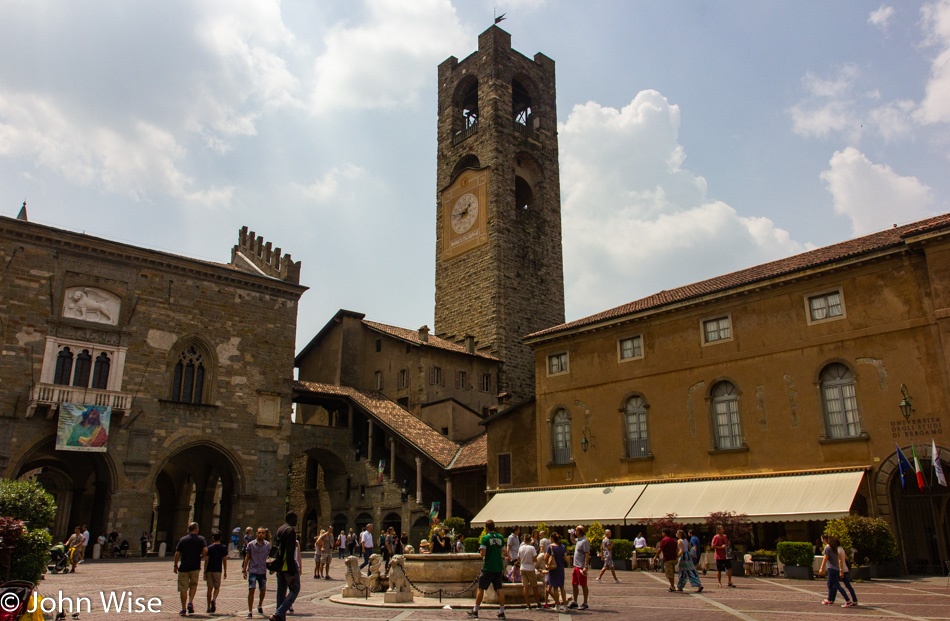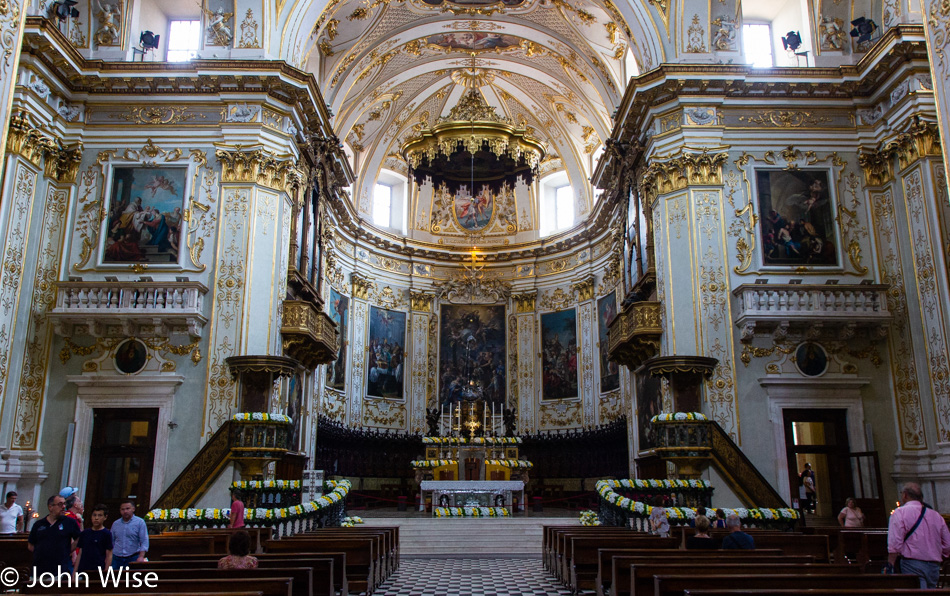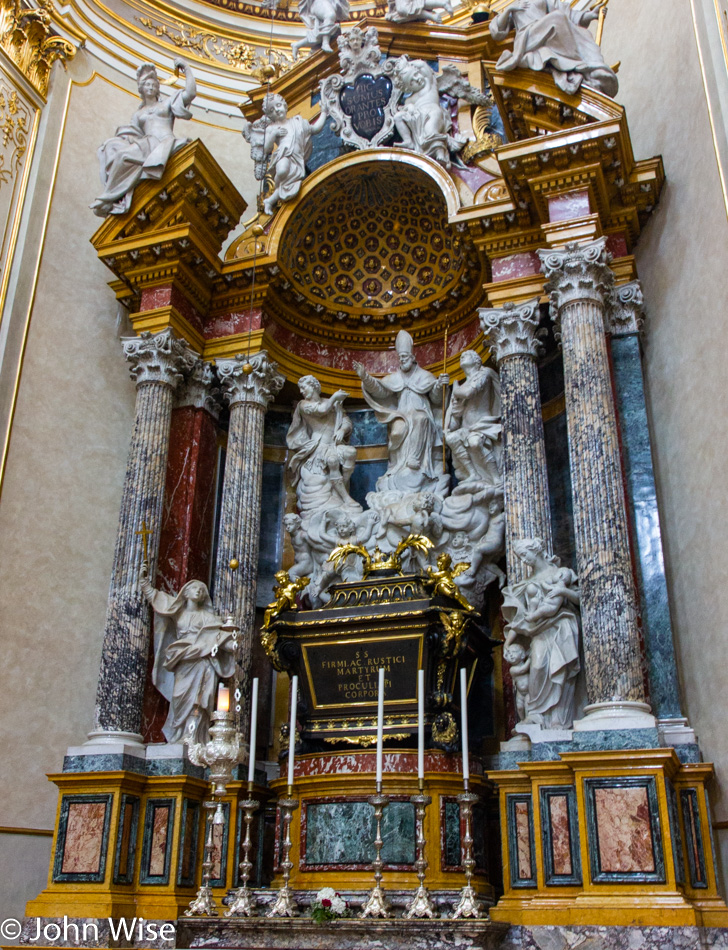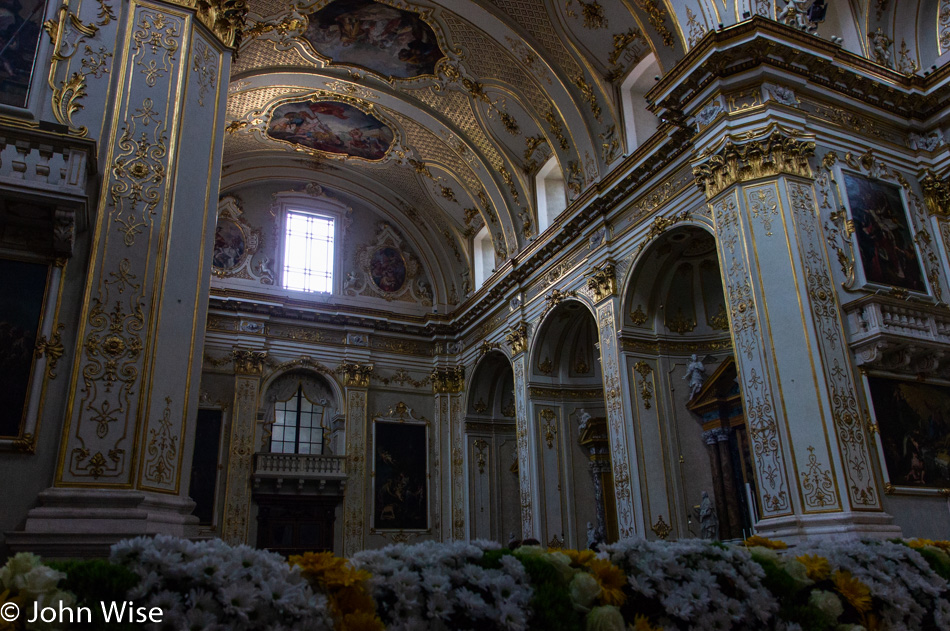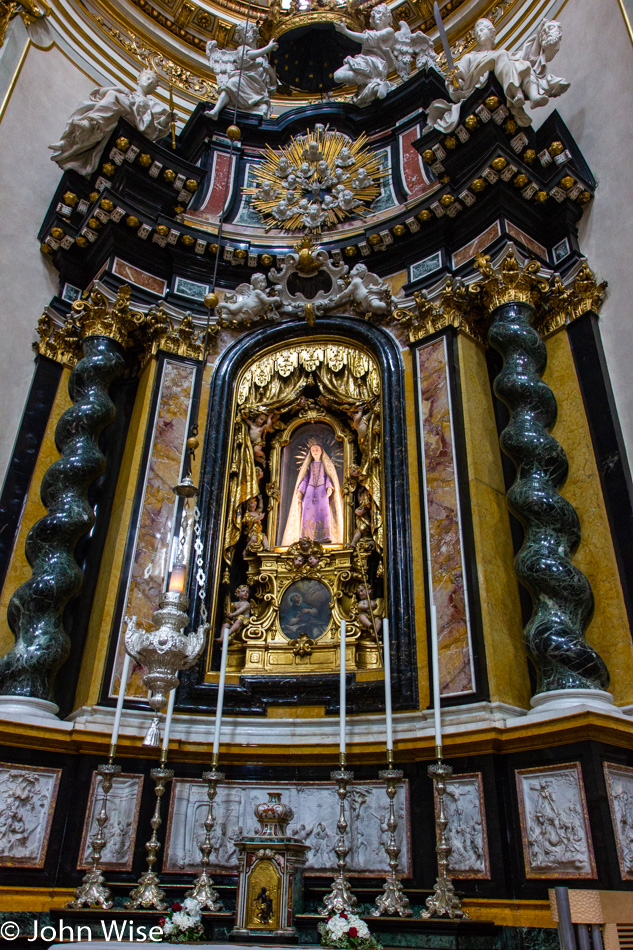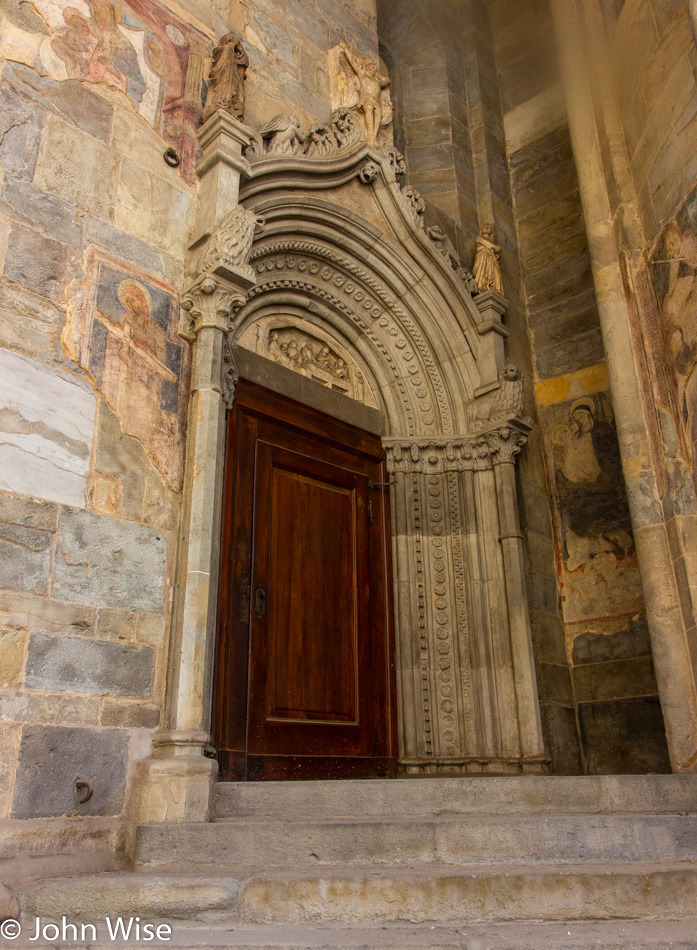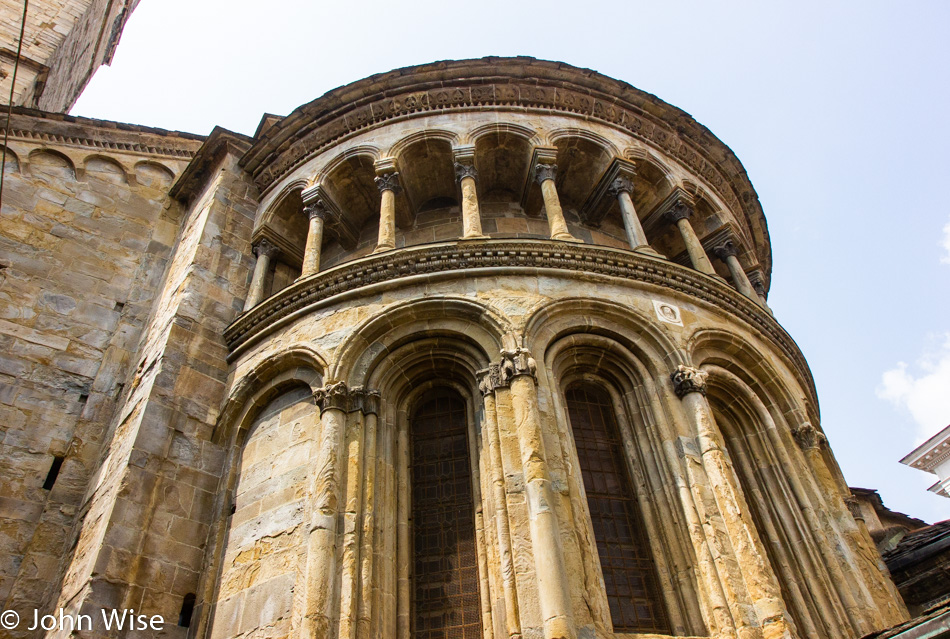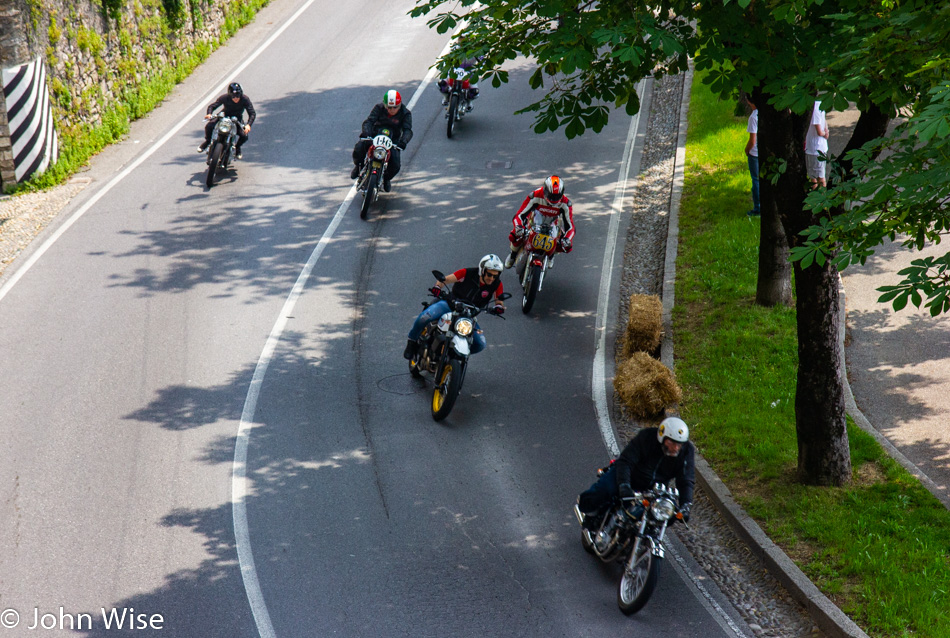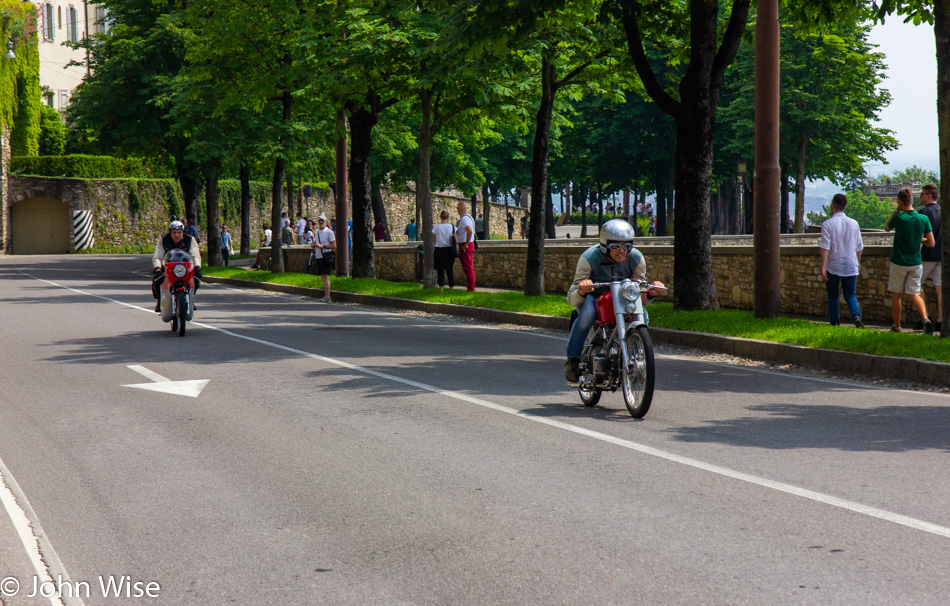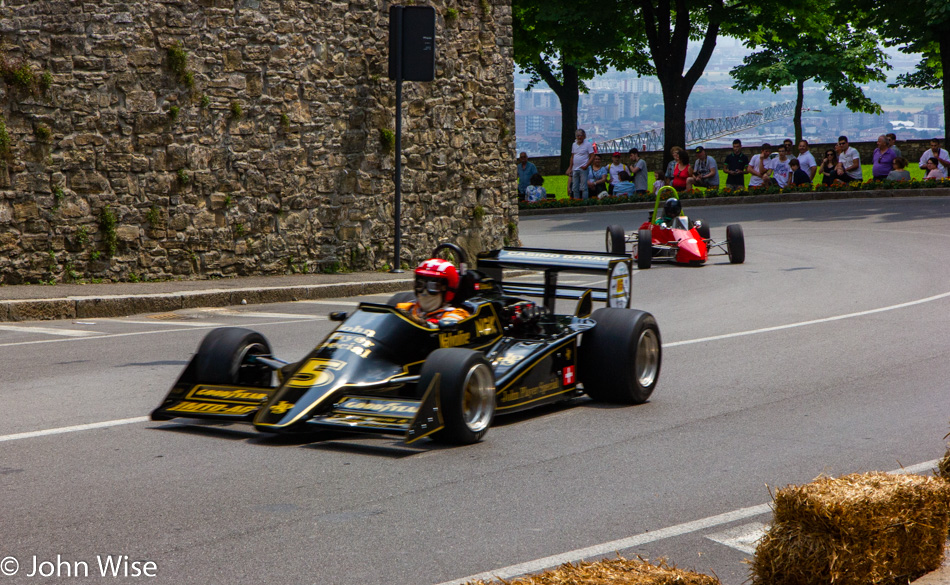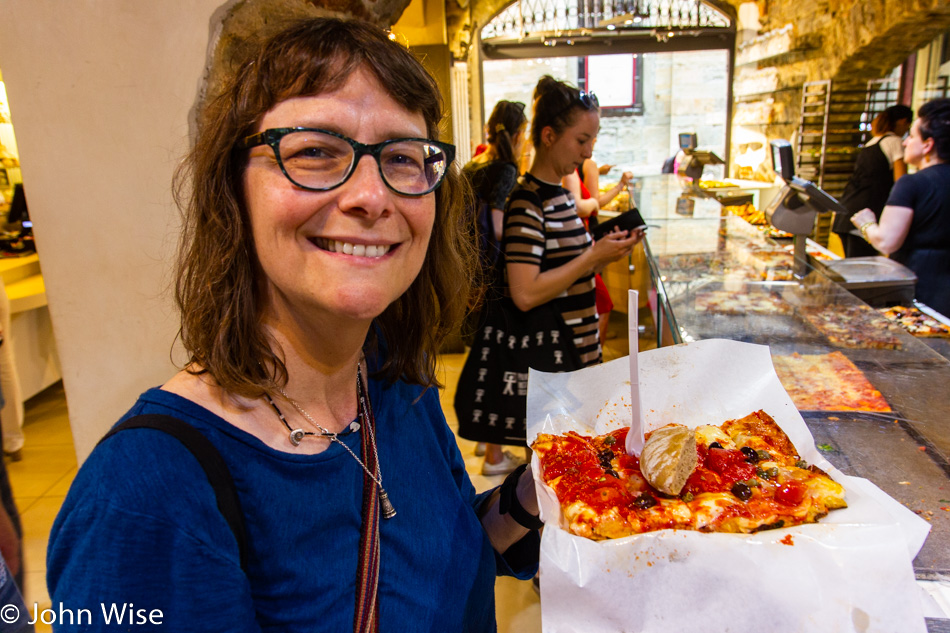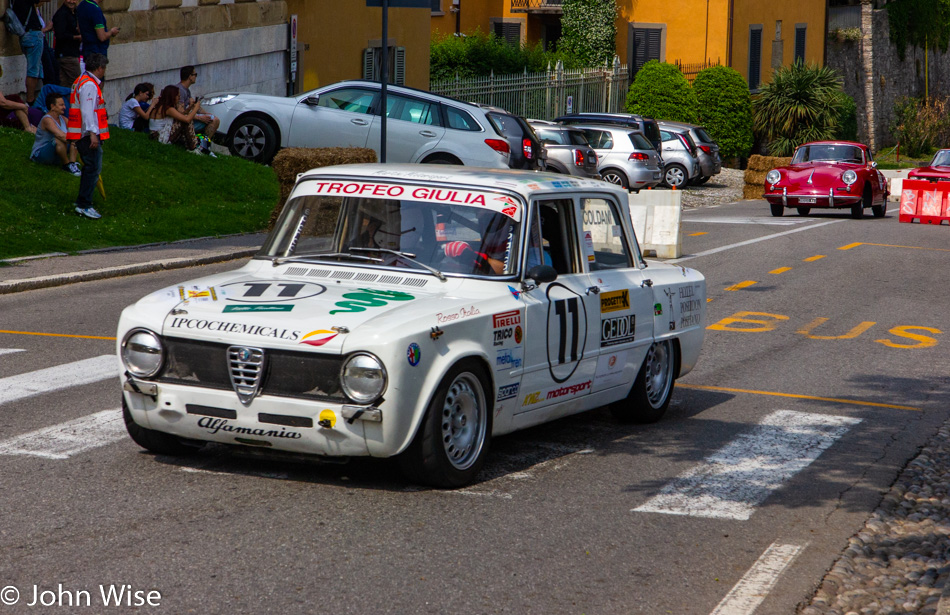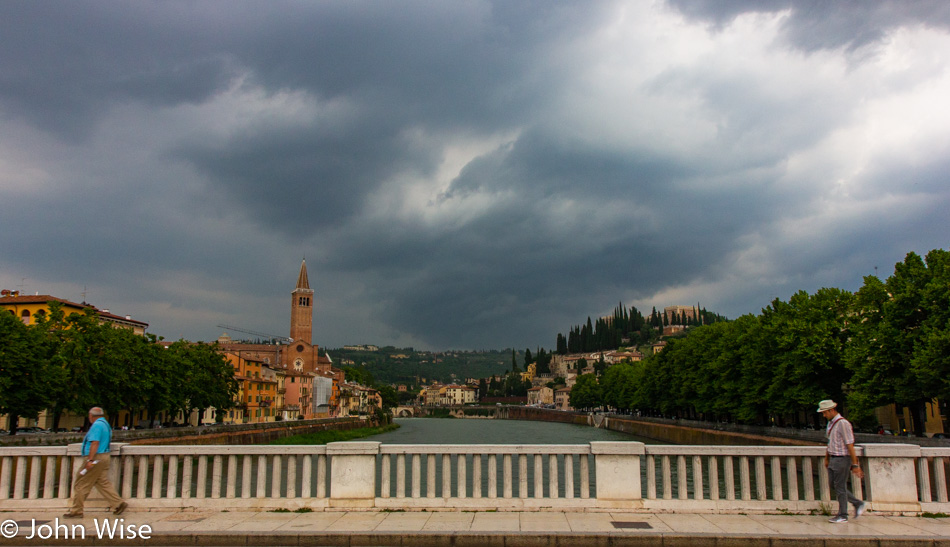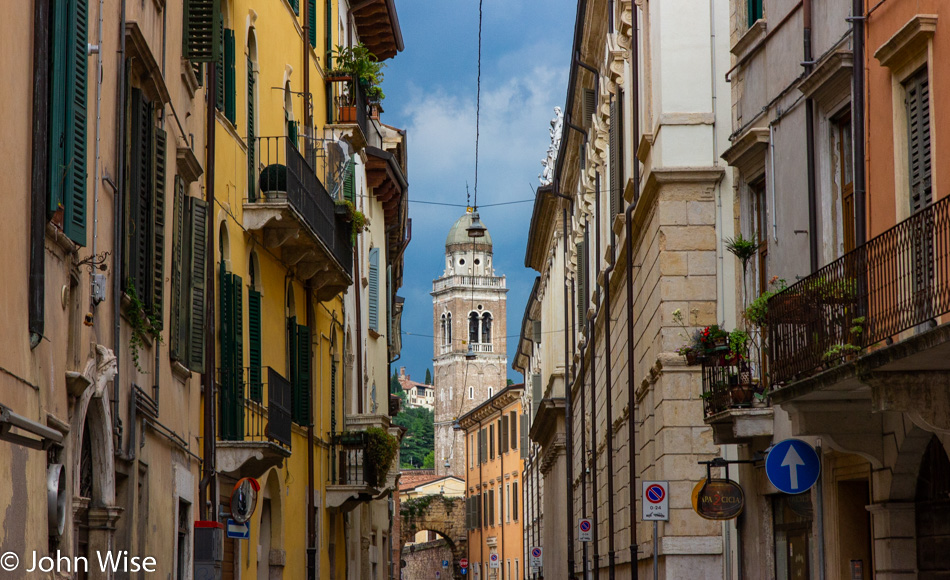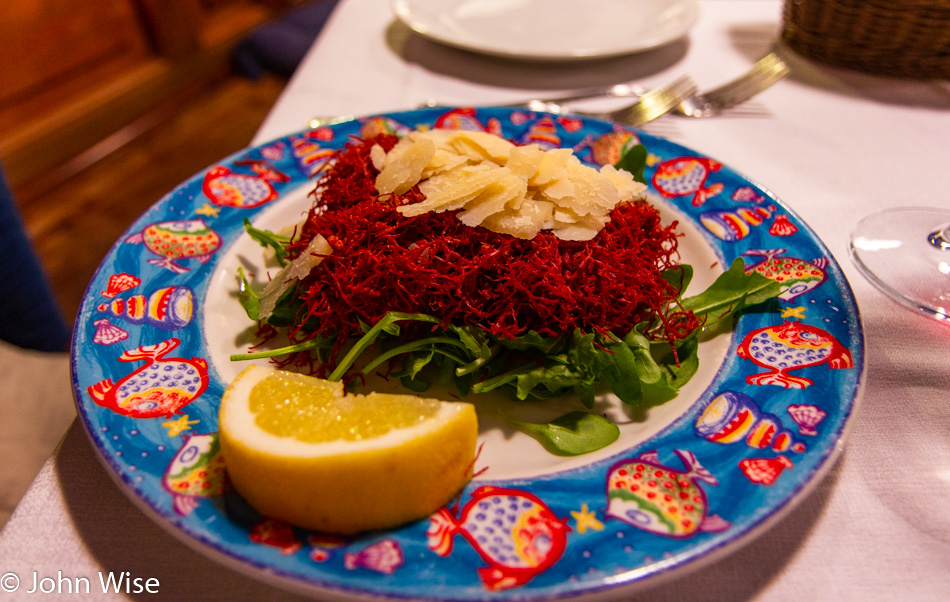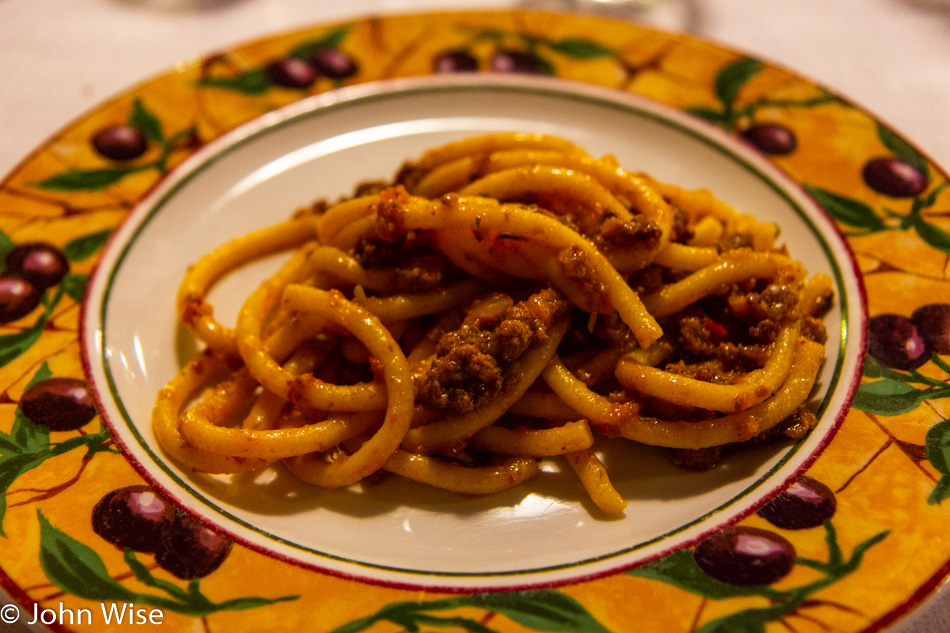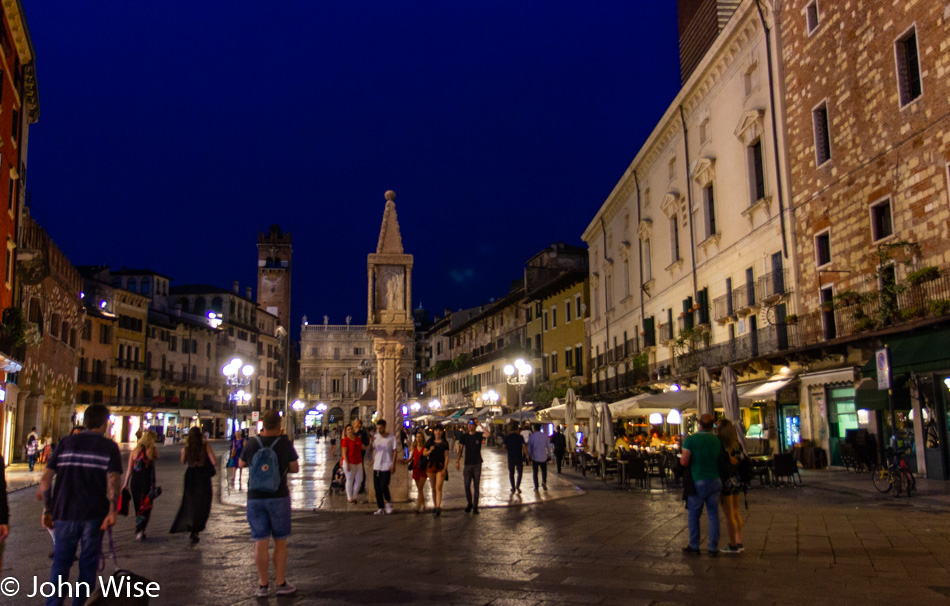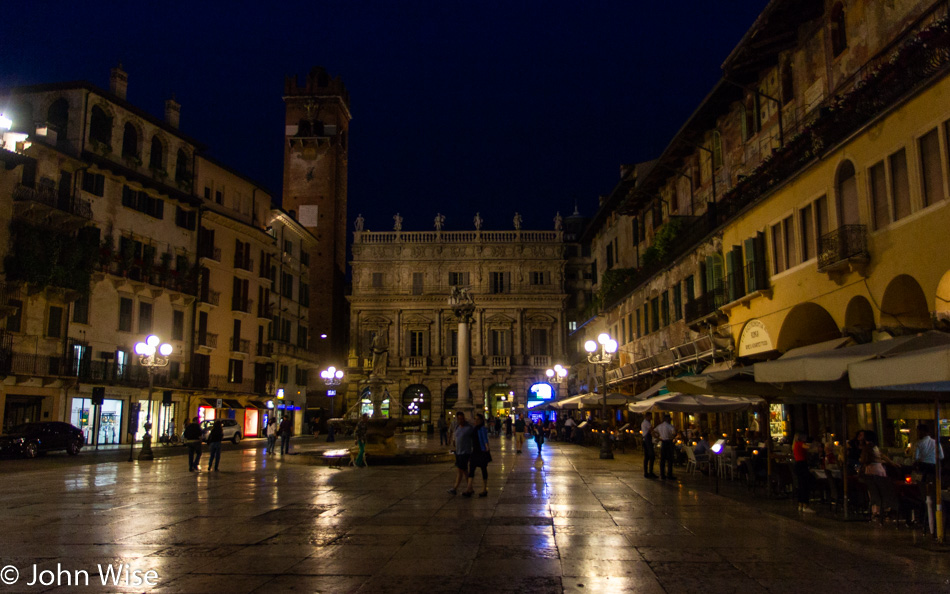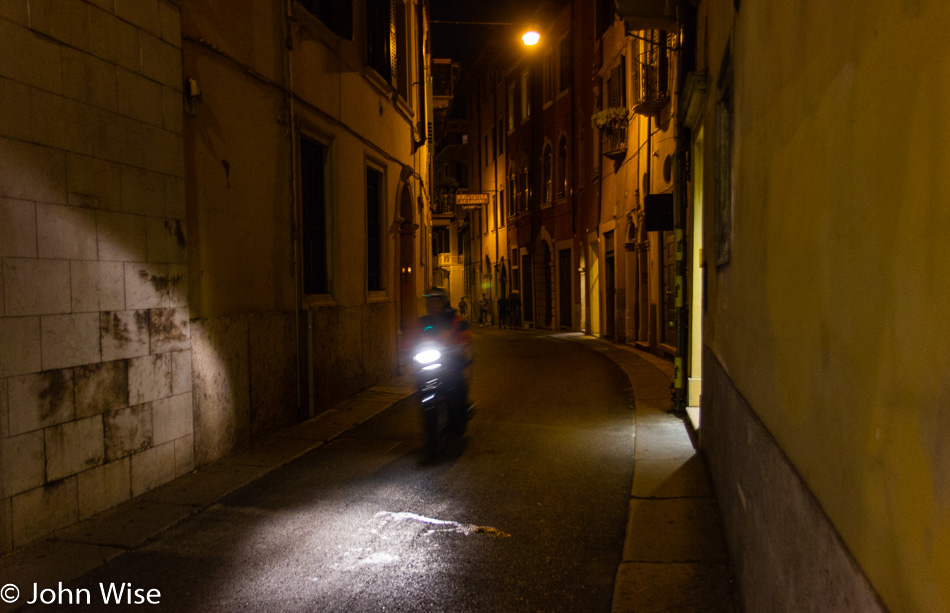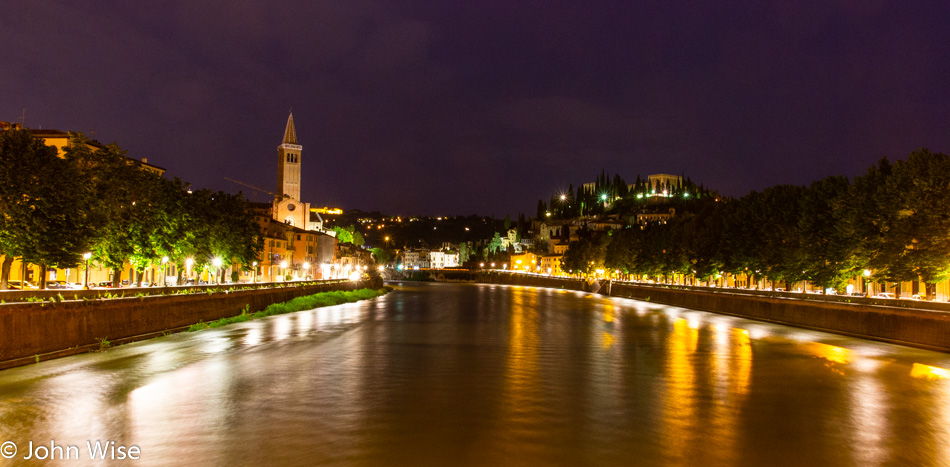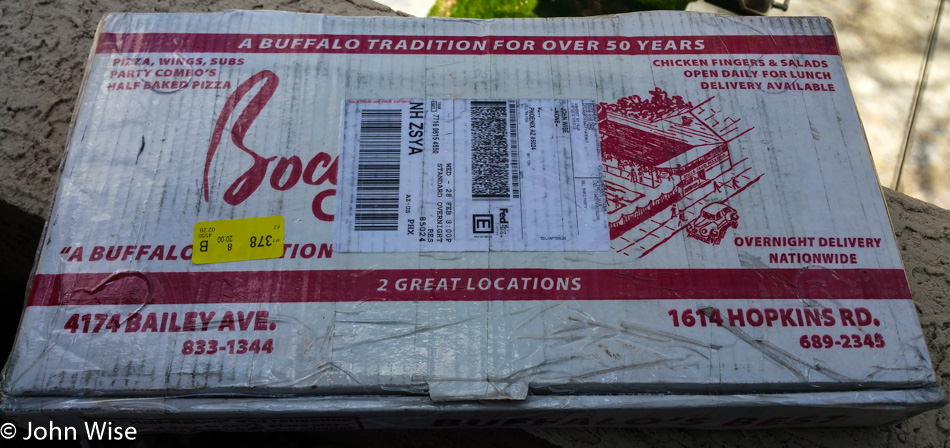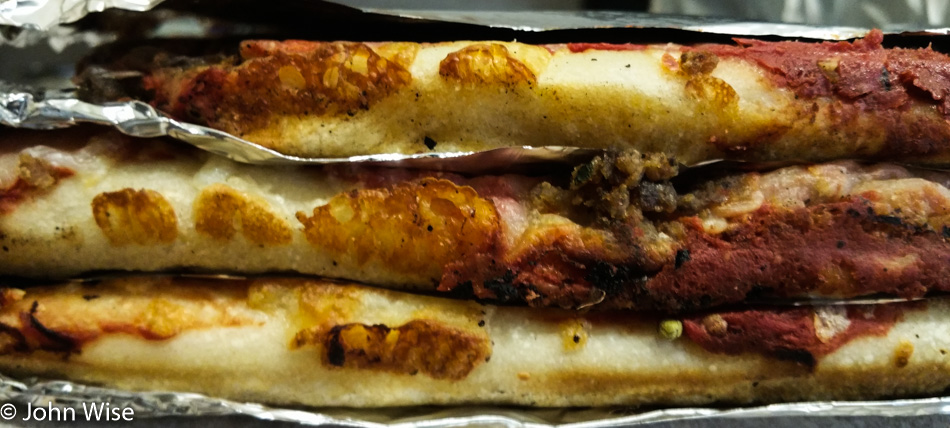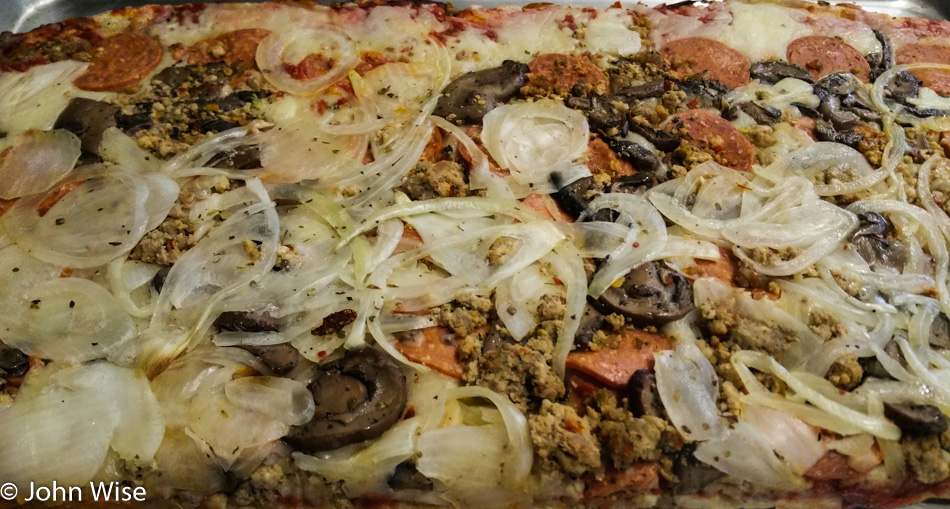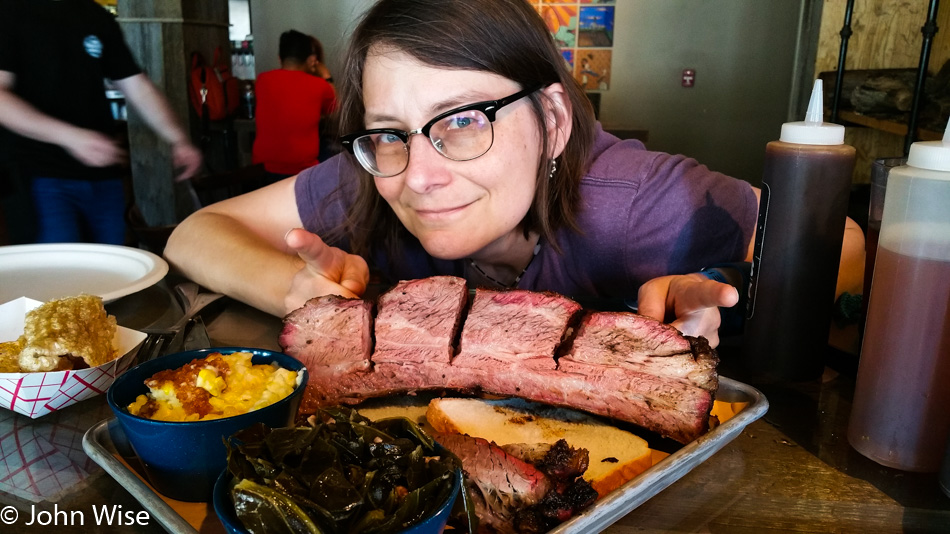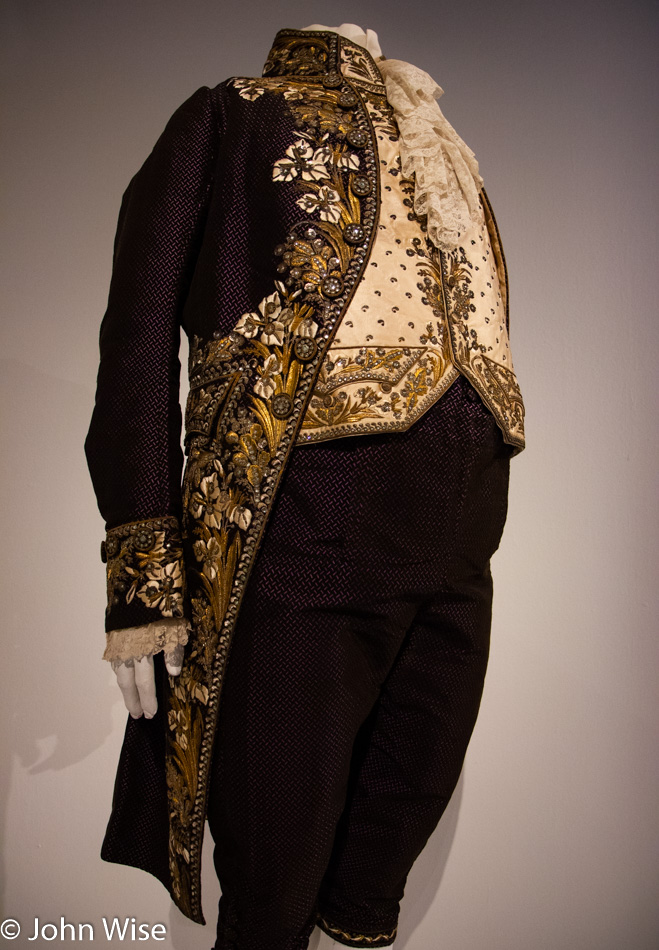
Left Phoenix a bit late for a trip to Los Angeles this morning; it was already 8:00. I didn’t have a lot of expectations for what we’d be doing today because the real reason for coming over was a concert we’re attending tomorrow and that’s all that’s really important for this quick jaunt to L.A. We made pretty good time getting there, and Caroline brought up that the Fashion Institute of Design & Merchandising, aka FIDM Museum, is only open on Saturday and doesn’t close until 5:00, so that became our destination. This formal wear was worn by the composer and pianist Johann Nepomuk Hummel back in the early 19th century.
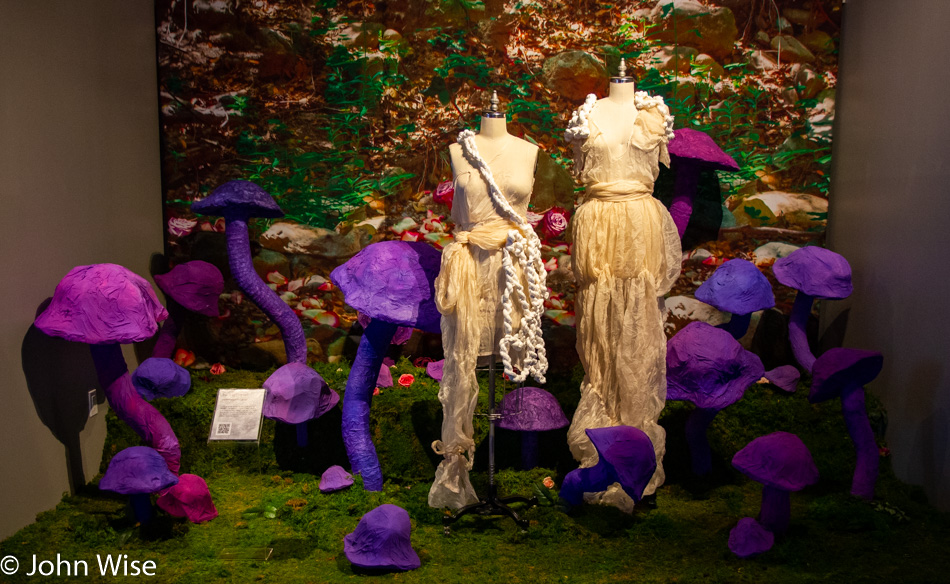
The FIDM is free to visit with a small exhibition space, mostly used by the students who are studying here. In the gift shop, Caroline spotted a handwoven and hand-dyed indigo-and-white scarf that looked spectacularly good on her and so it became hers.

We were somewhat worried about air conditions in Los Angeles due to recent hellish fires attacking the state, but as you can see here it’s a beautiful day to be visiting.

Oh yeah, Jessica is still with us, though this was her last day hanging out. After we left the museum, we went wandering around with no plan at hand except to get some walking in after sitting in the car for so long. We stumbled upon the top of Angels Flight Railway and took the opportunity to finally ride this funicular down the hill. Obviously, we lived through the experience, but that wasn’t true for someone else back in 2001, when a malfunction had one train careen down the track into the train below, killing a passenger and injuring several others. This tragedy closed the funicular for the next nine years, only to reopen in 2010 and close again in 2011 for a month and then again in 2013 following a derailment, this time staying closed until late 2017. So here we were, acting as guinea pigs, tempting fate.

Across the street from the funicular is the Grand Central Market, which must be the most popular food court in all of California. While we gladly accepted a free sample of a street taco, we had to forego eating anything else to ensure we had a large appetite for what was coming later.

While my daughter lives just a couple of hours south of Los Angeles, she’s very rarely been up here. Seeing we were in the neighborhood, I thought she might like to see one of the more iconic locations where Blade Runner was filmed. She insists she’s seen the film before, but she’s definitely not as enthusiastic as we are, and so I’m gonna say this is checked into the category of remembrances in which she earned demerit points for not showing enough excitement.

This was one of the first theaters on Broadway in Los Angeles – today, it is a rotting hulk. The Pantages Theatre first opened back in 1910, but by 1925, it started changing owners until, for the last dozen years, it was operational as a grindhouse-type independent joint. With all the million-dollar condos going up west of here, maybe someday this area will be gentrified too, and these old theaters could find a new use. Then again, why would anyone want to go out when they can watch their big-screen TVs in the safety of their expensive nests?

Forty years ago, scenes such as this drew me into downtown Los Angeles on the bus over and over again without my parent’s knowledge. I was fascinated by those who preached, screamed, sang, cursed, or were putting their madness on display on the streets surrounding Skid Row. While much of the downtown area is going through a renaissance, there are still pockets where people can get their attitude on. These dozen angry men were preaching against the sin of homosexuality and bestiality. The sign on the right is admonishing white people to get ready for “Nuclear Fury and Eternal Slavery” for subverting the people of Earth.

Out of the frying pan into the fire. We are at Guelaguetza Restaurante, known as the home of mole, where we will certainly be trying a sampler of their various Oaxacan mole flavors, but first up are the chapulines. You may have already seen in the above photo that I’m talking about grasshoppers. This is our most serious dive into eating insects yet. These particular hoppers have been cooked in jalapeno, onion, and tomato and are quite spicy. The three of us take a serious helping of fried bugs and roll them up into corn tortillas with Oaxacan string cheese, avocado, and a splash of lime. Other than the strange sensation when the end of the legs gets stuck in your teeth, these chapulines are seriously good eating. I’d eat them again. As for the moles, they were terrific, as was the dessert sampler.
Just as we were finishing up, I received a surprise phone call from Itay, and we set up a meeting at Aroma Sunset Bar & Grill on Sunset and Martel, just down the street from where Itay lives with Rotem. While I learned on the phone about his reason for reaching out, I left it as a surprise for Caroline until we met. Rotem is expecting a baby boy, due in April 2019. We spent the next 4 hours until midnight discussing baby names, dissing Los Angeles, talking about culture and discovery, along with their recent trip over to Hawaii for the honeymoon they never had after getting married. The funny thing about this chance meeting is that earlier in the day, I was complaining about how Itay never calls, and then when we’re just 30 minutes away from their apartment, he is dialing into our presence.



